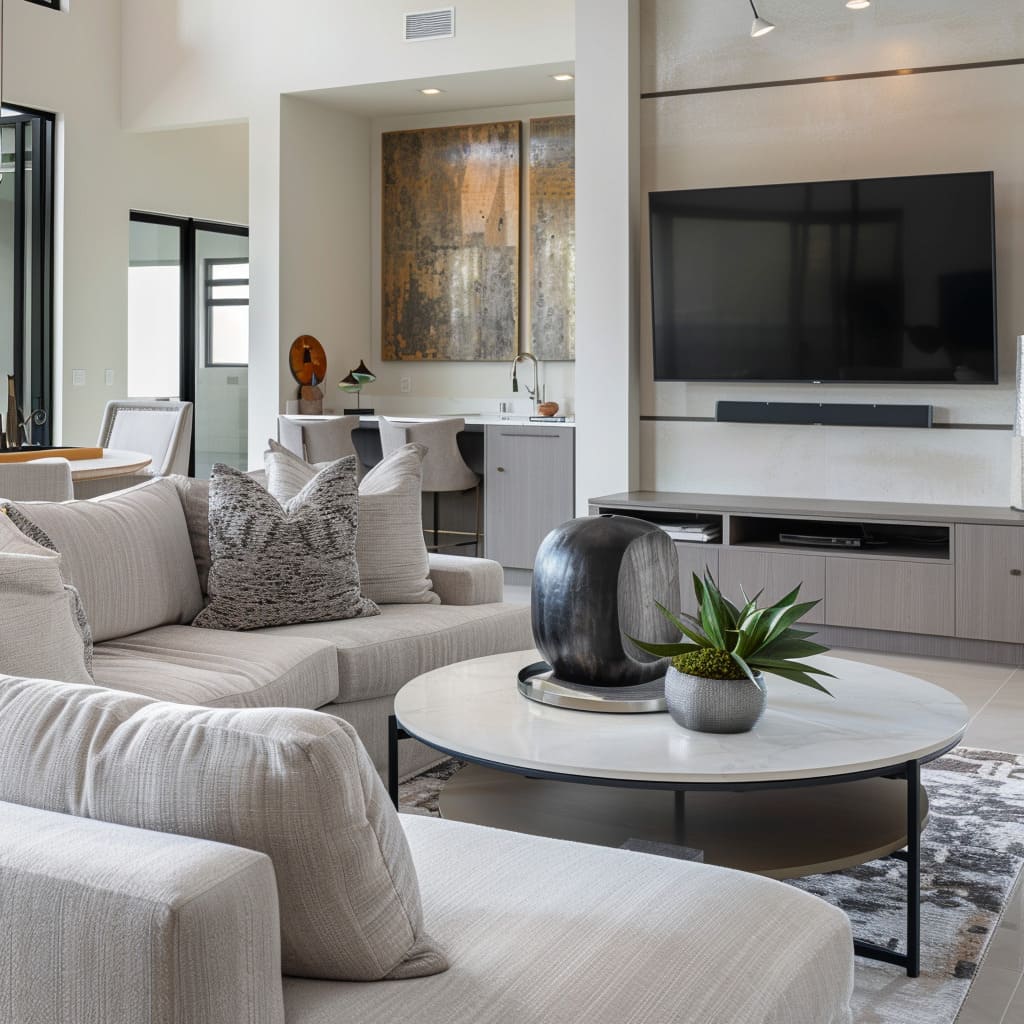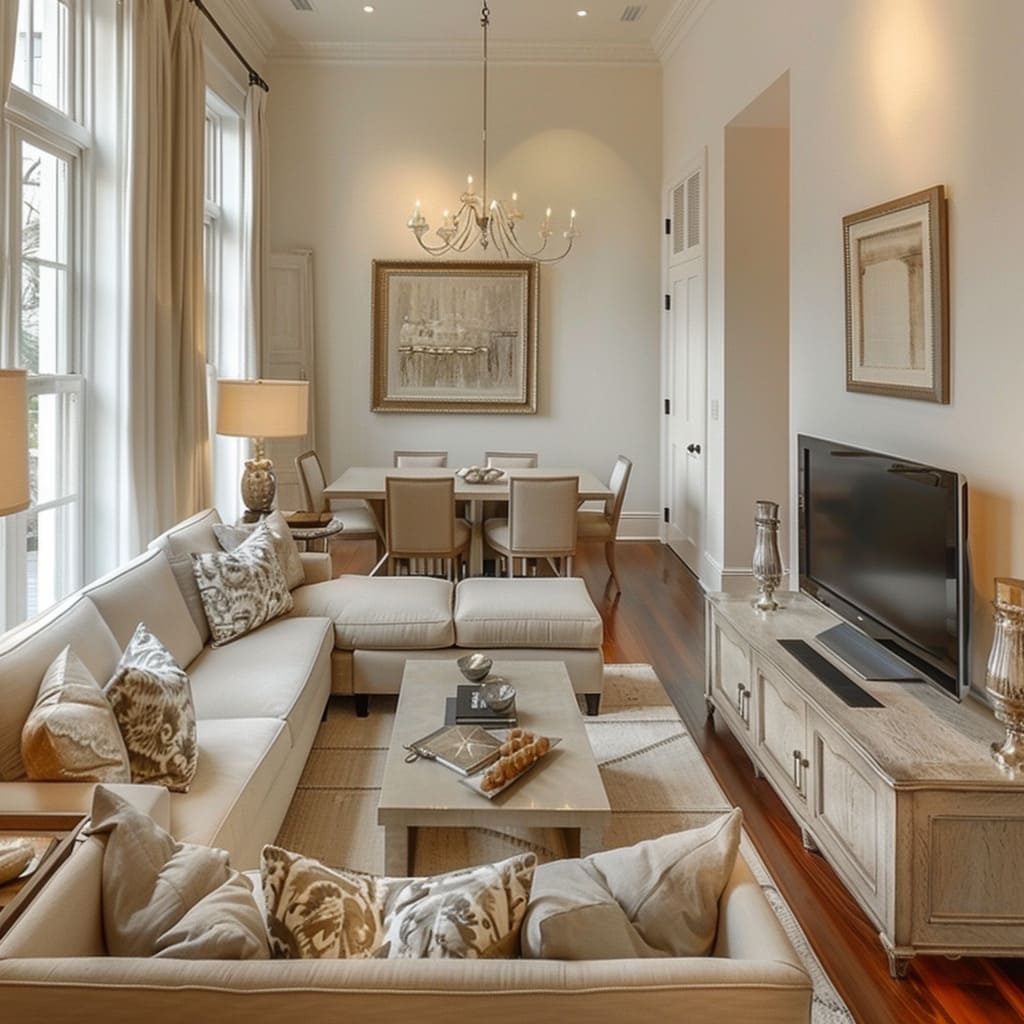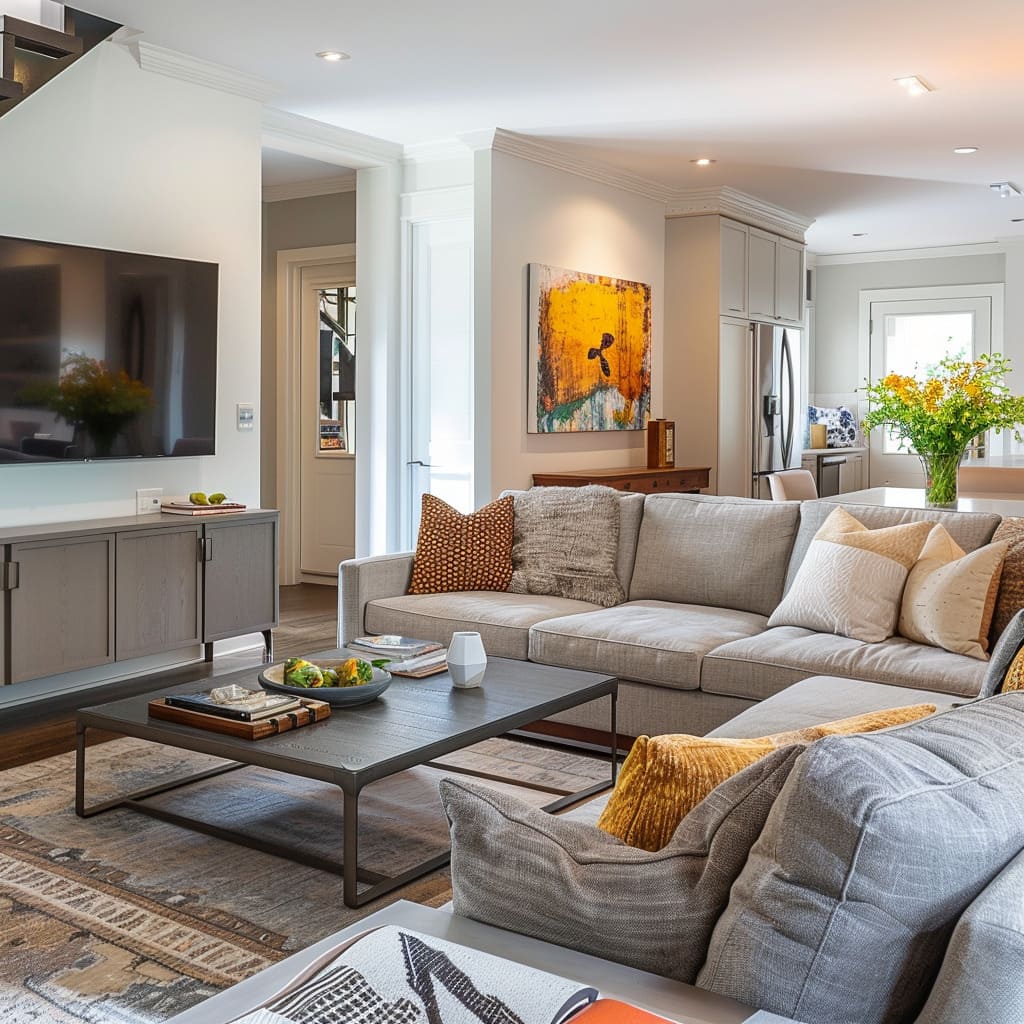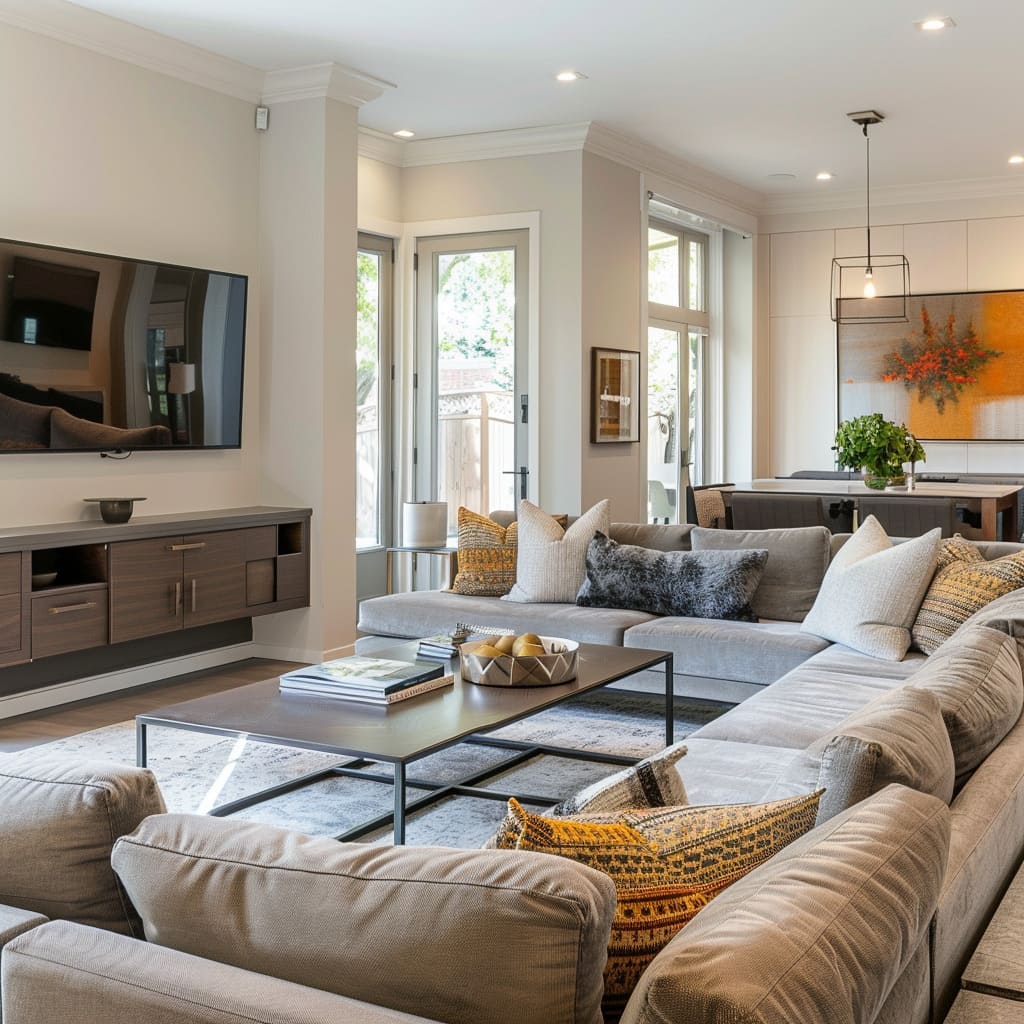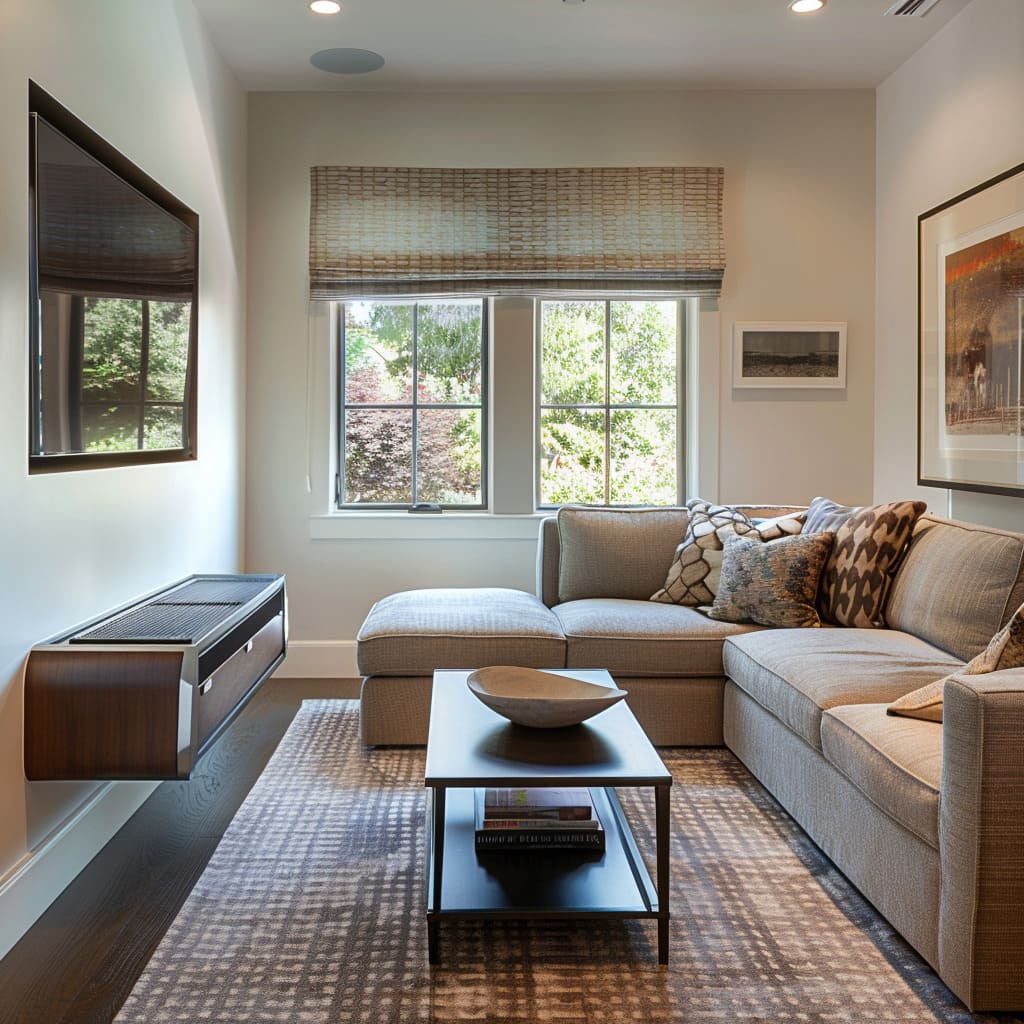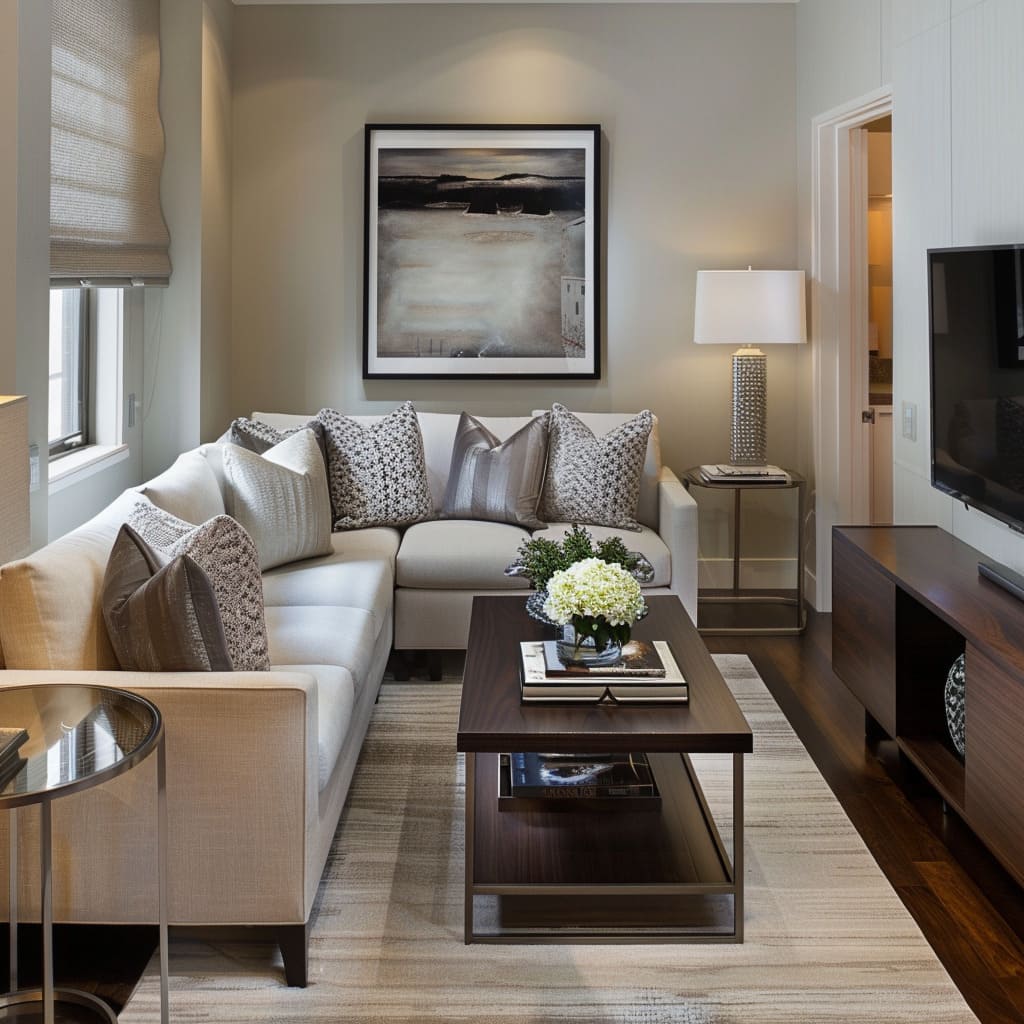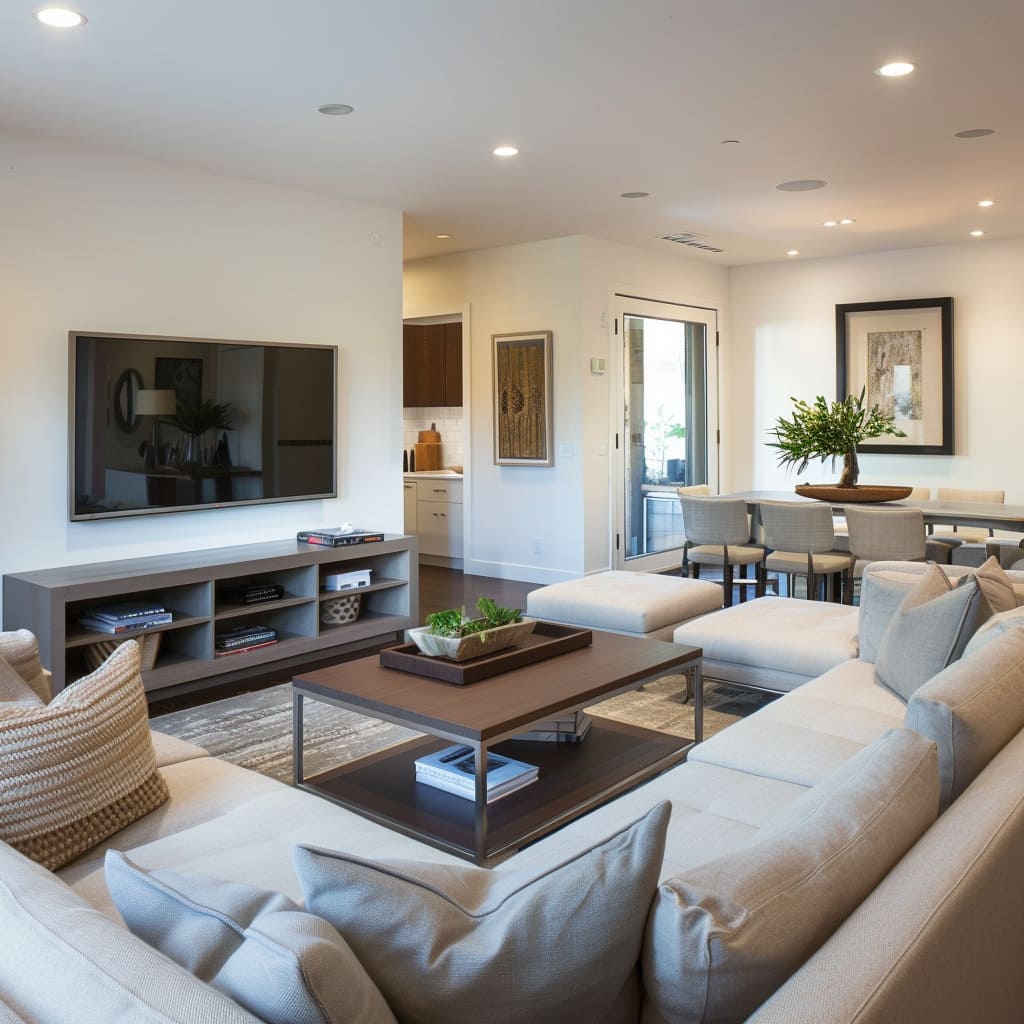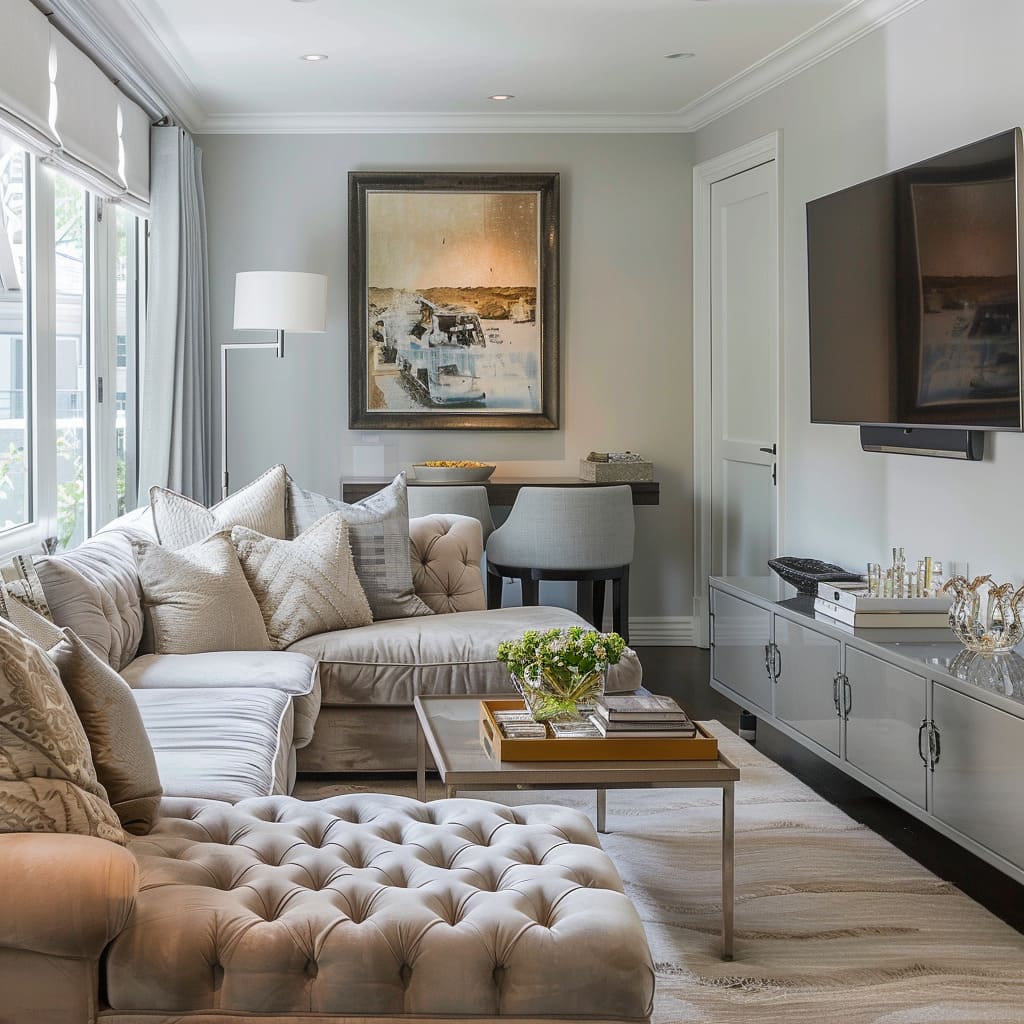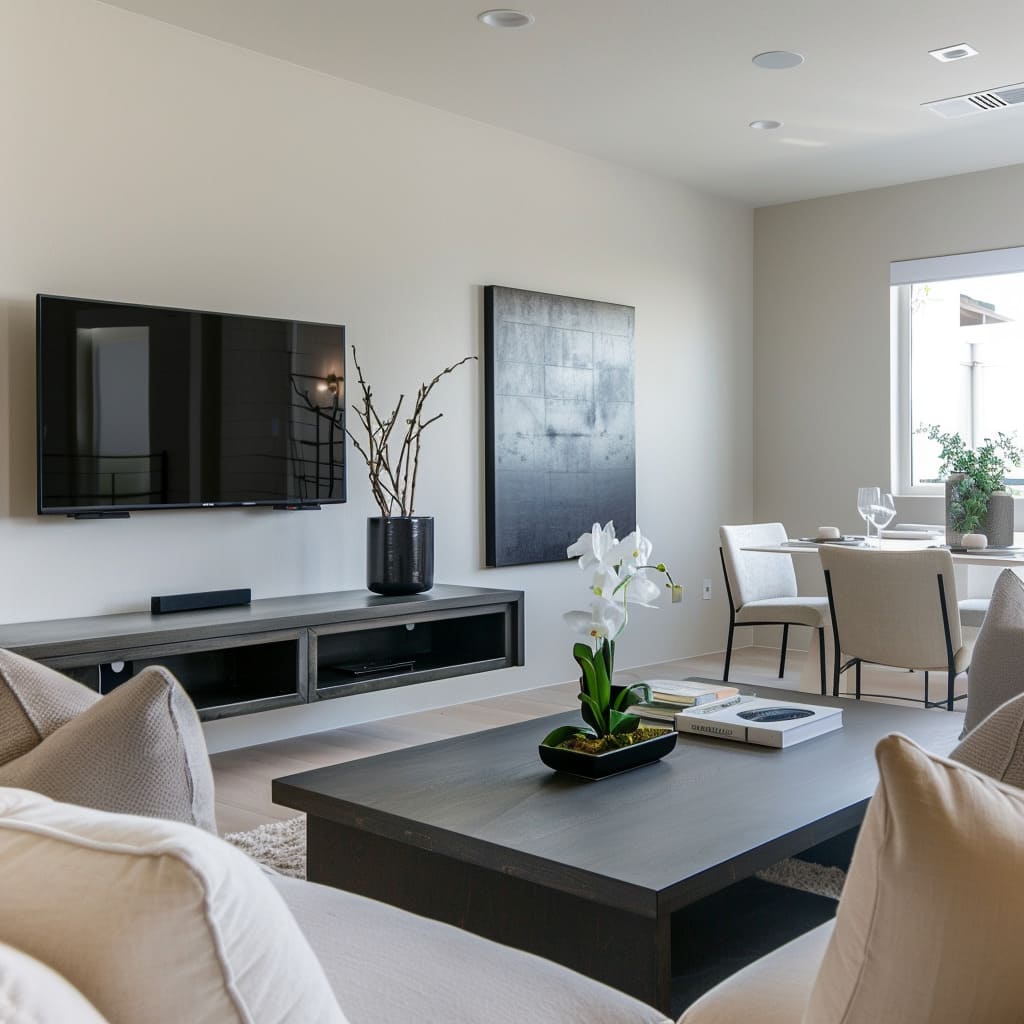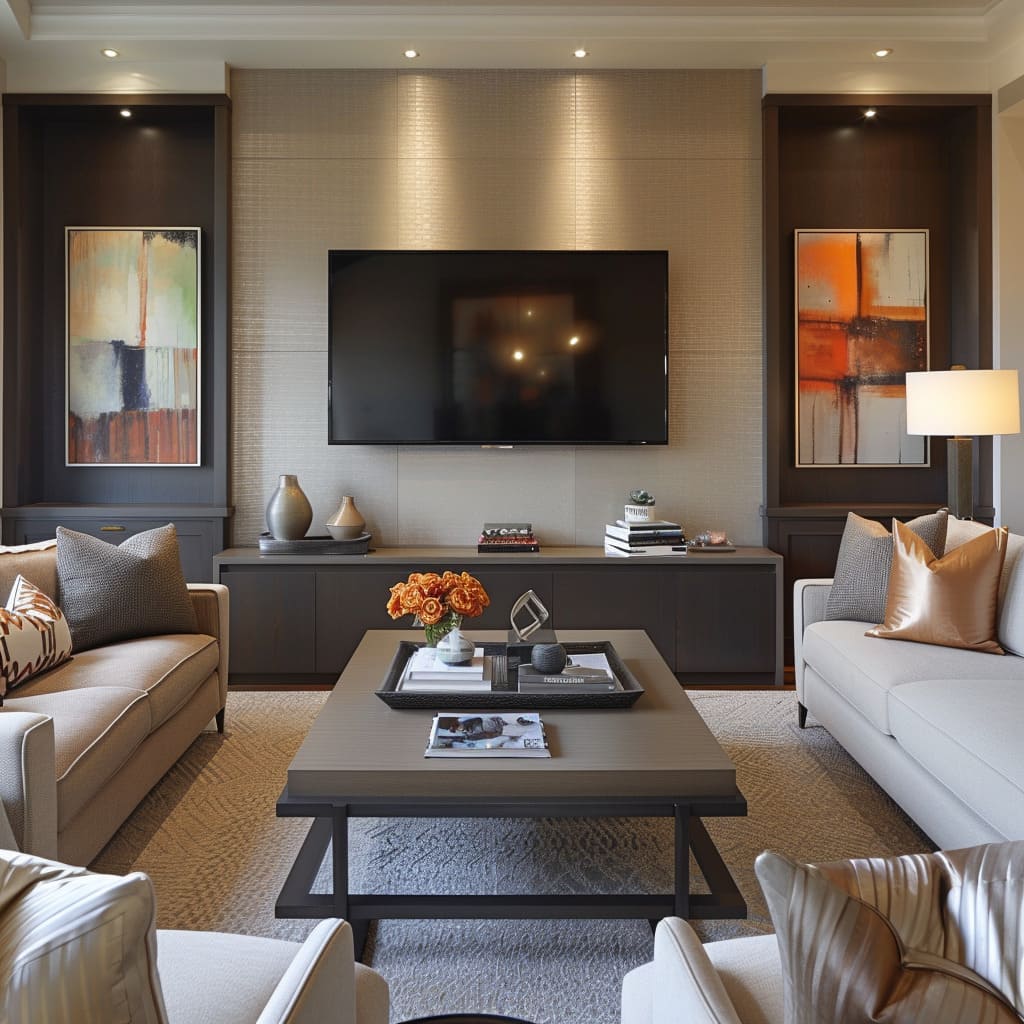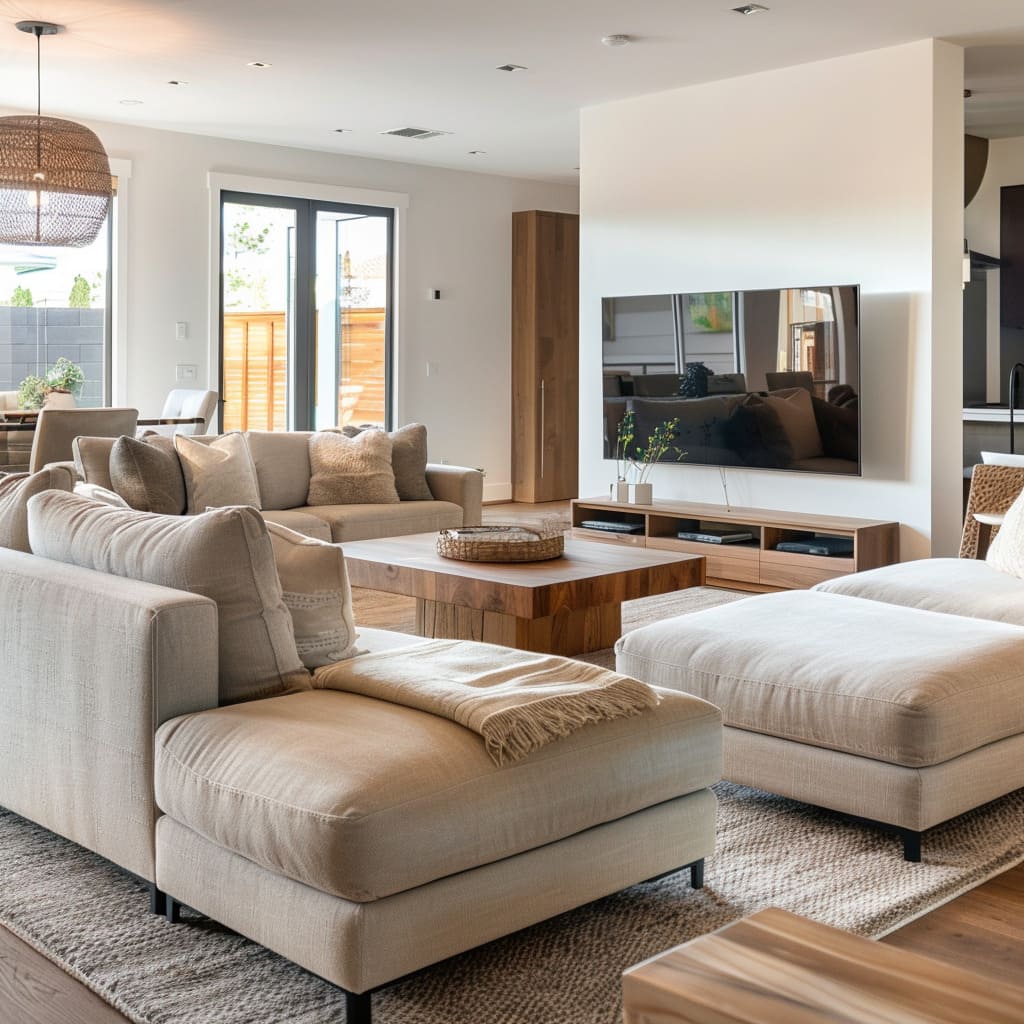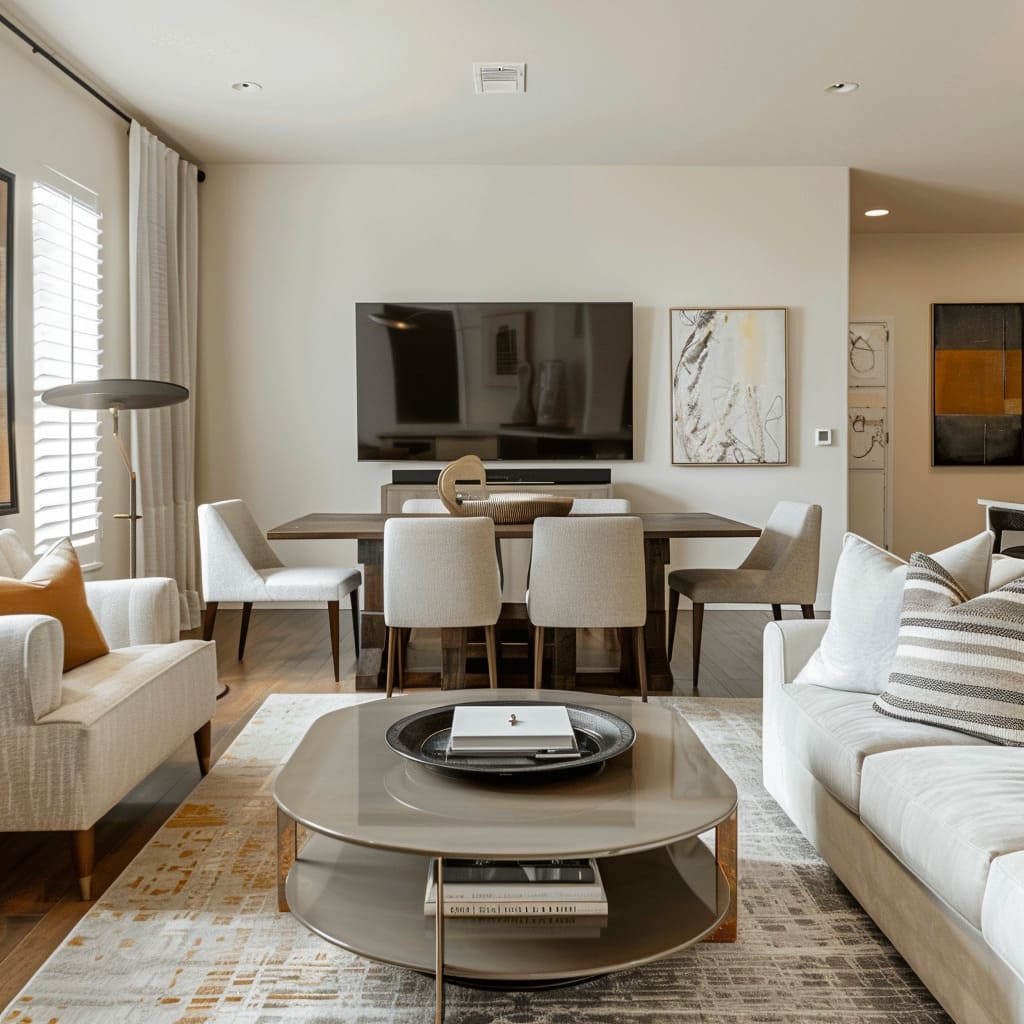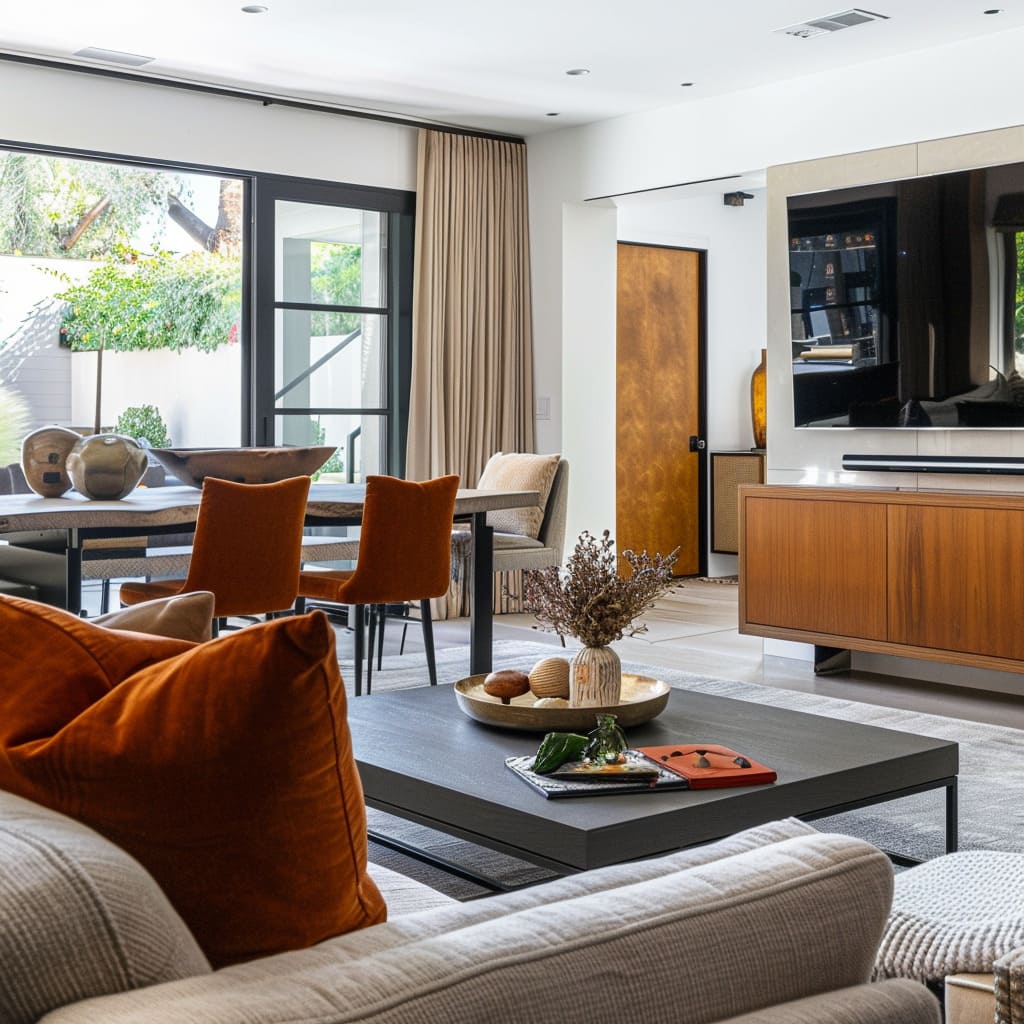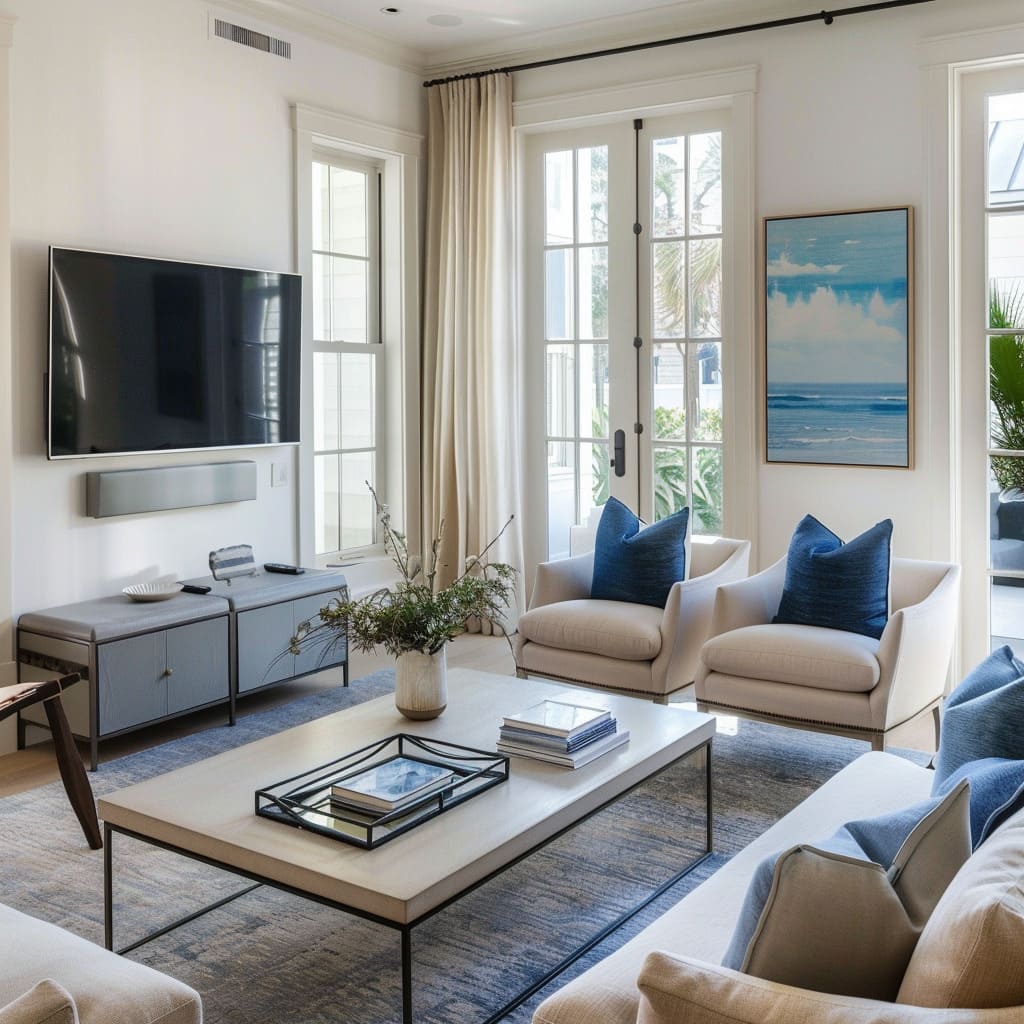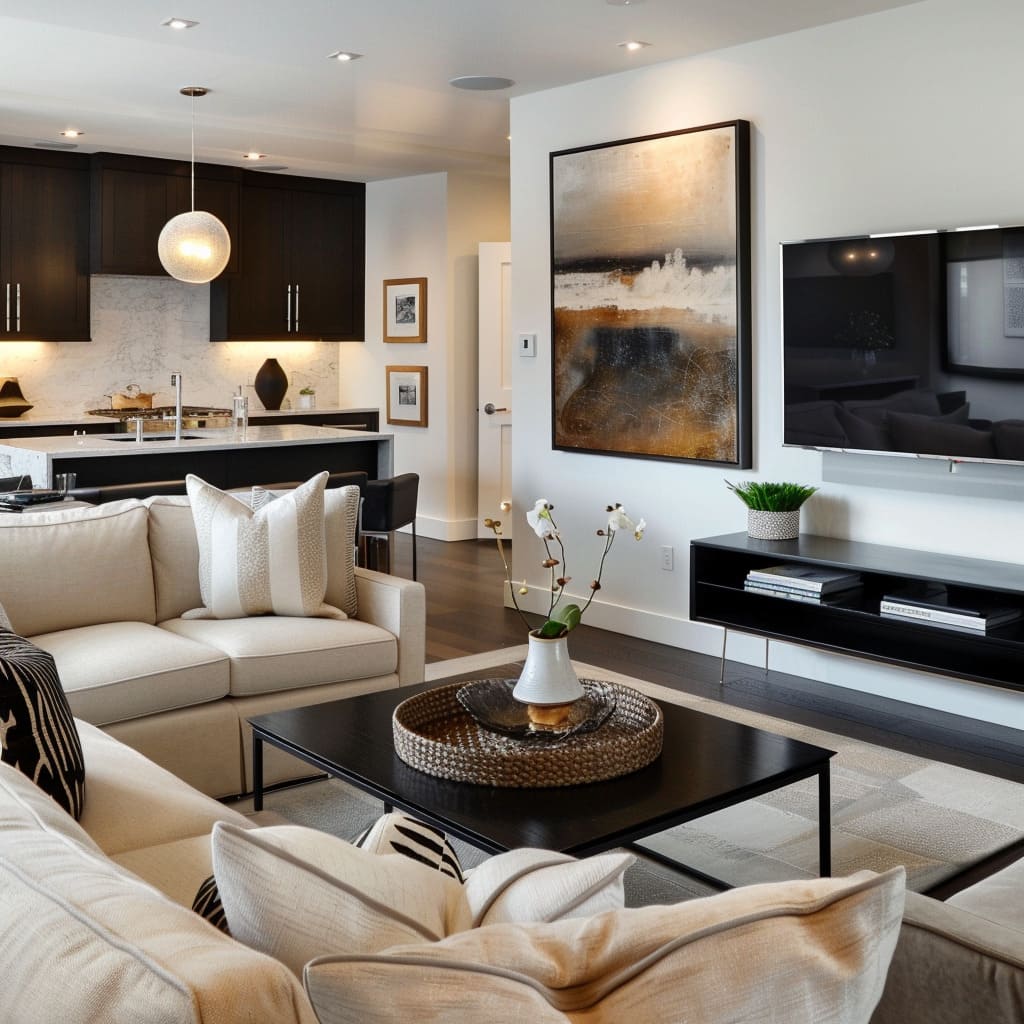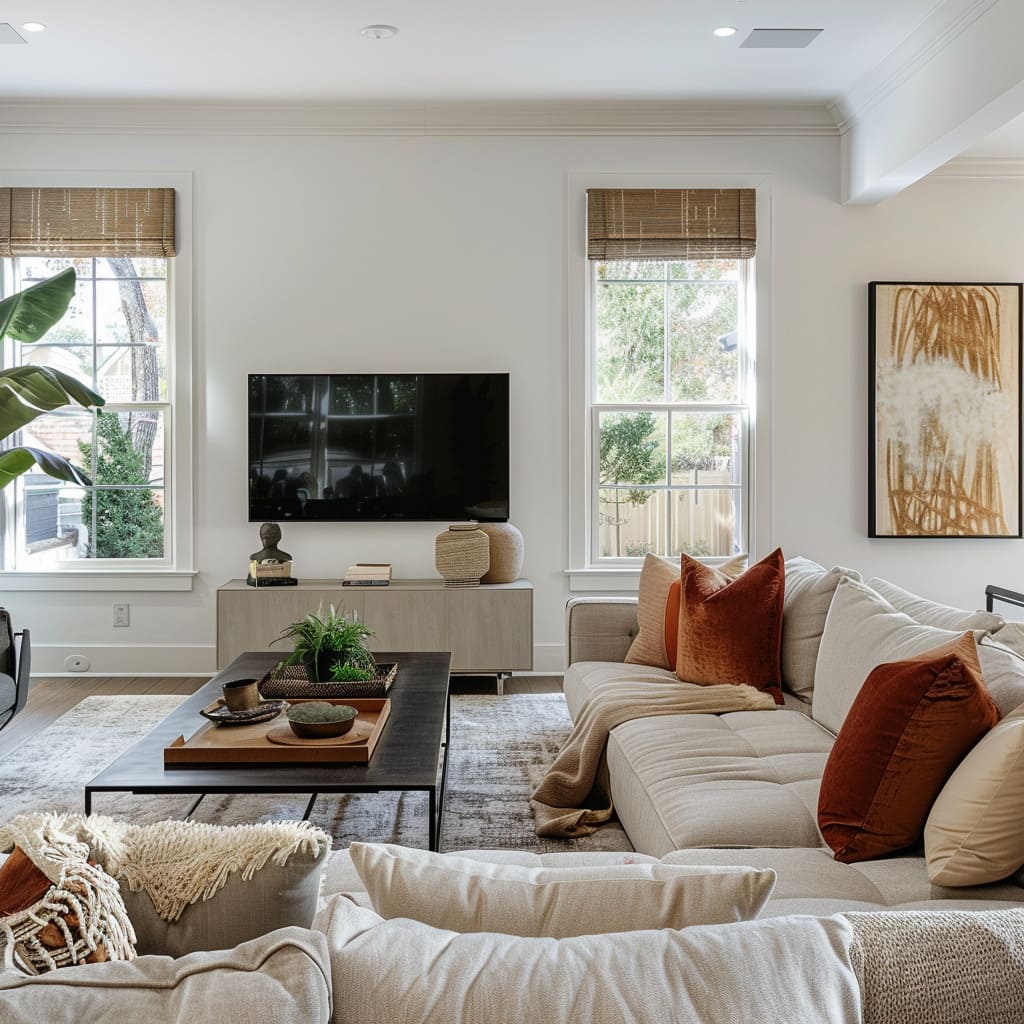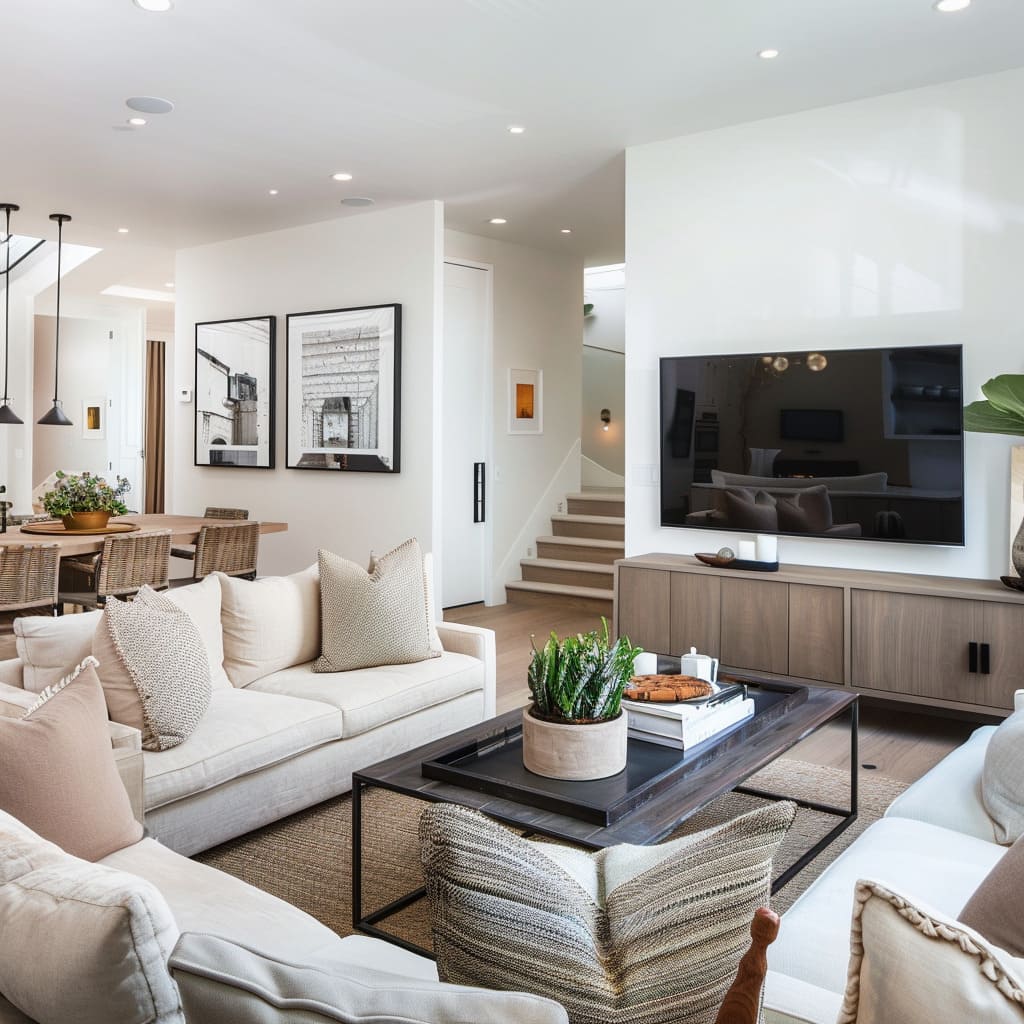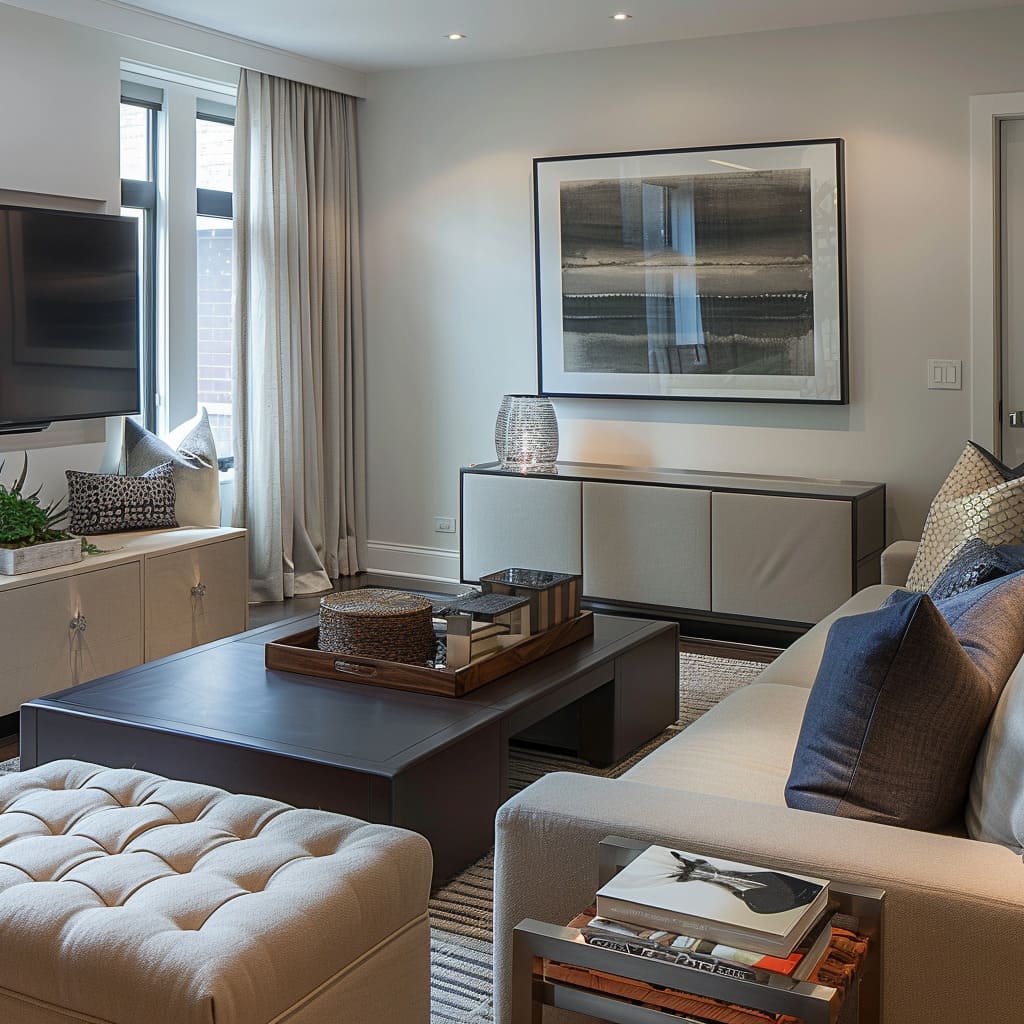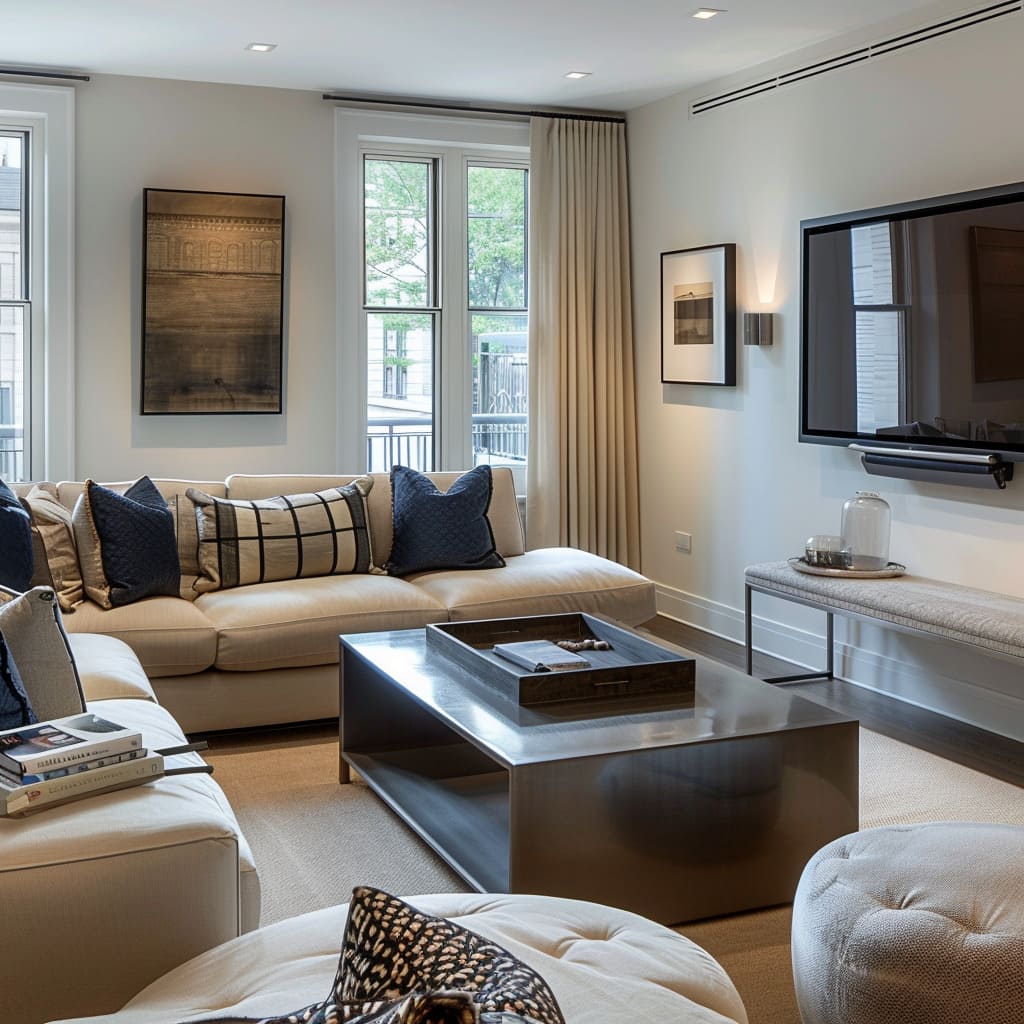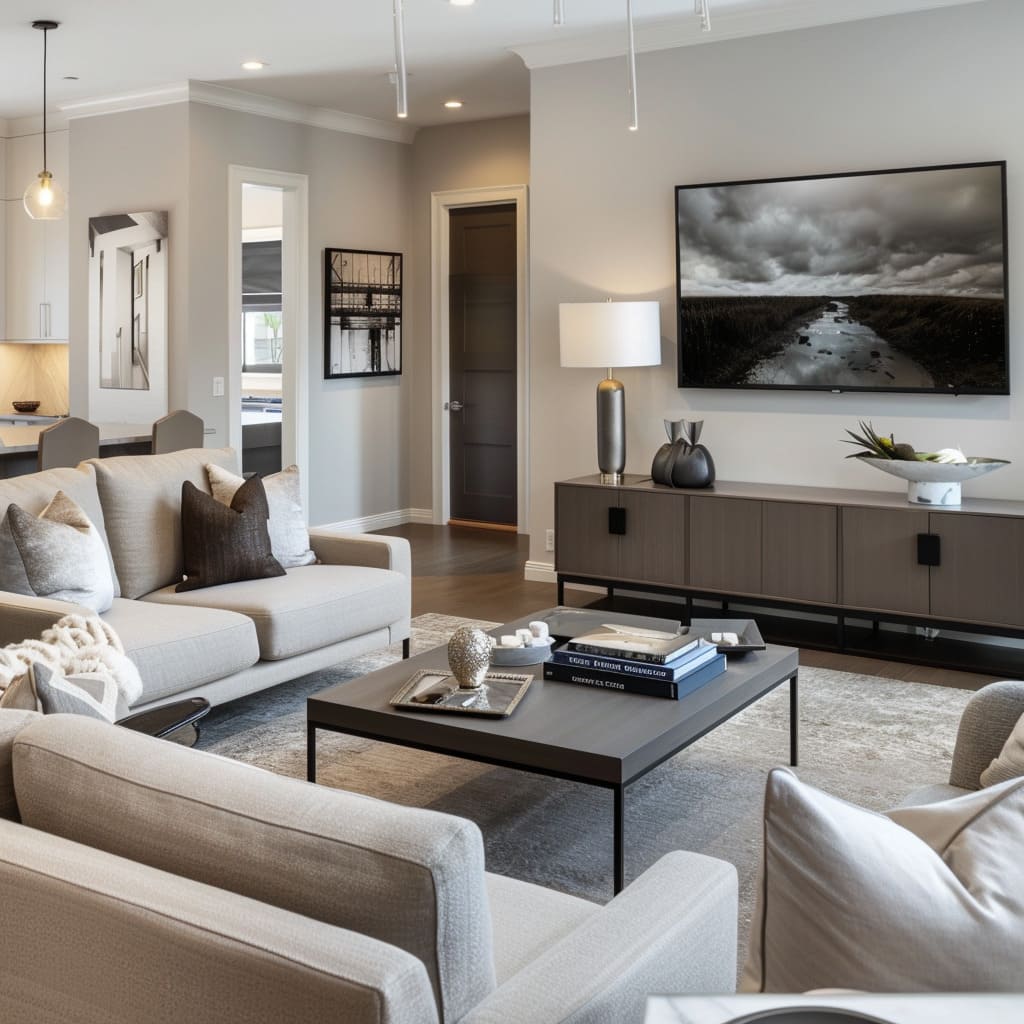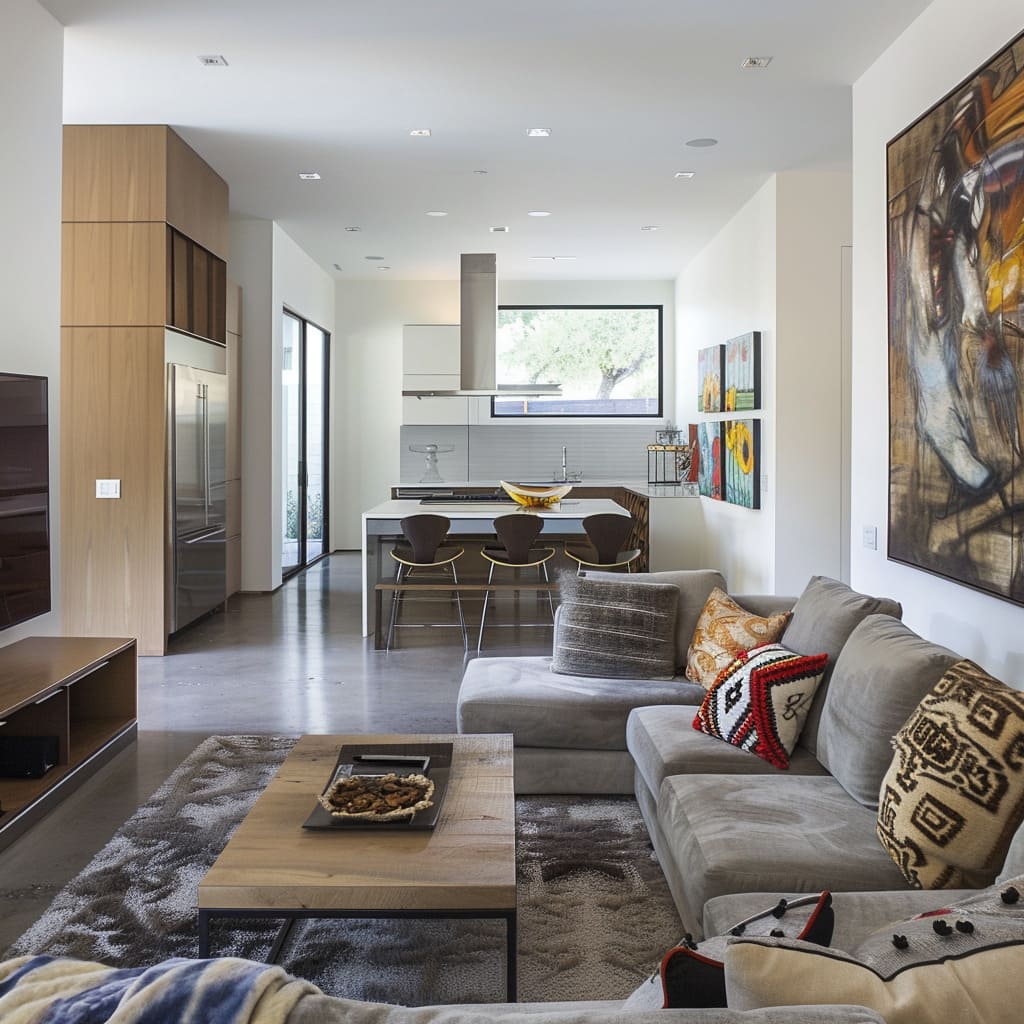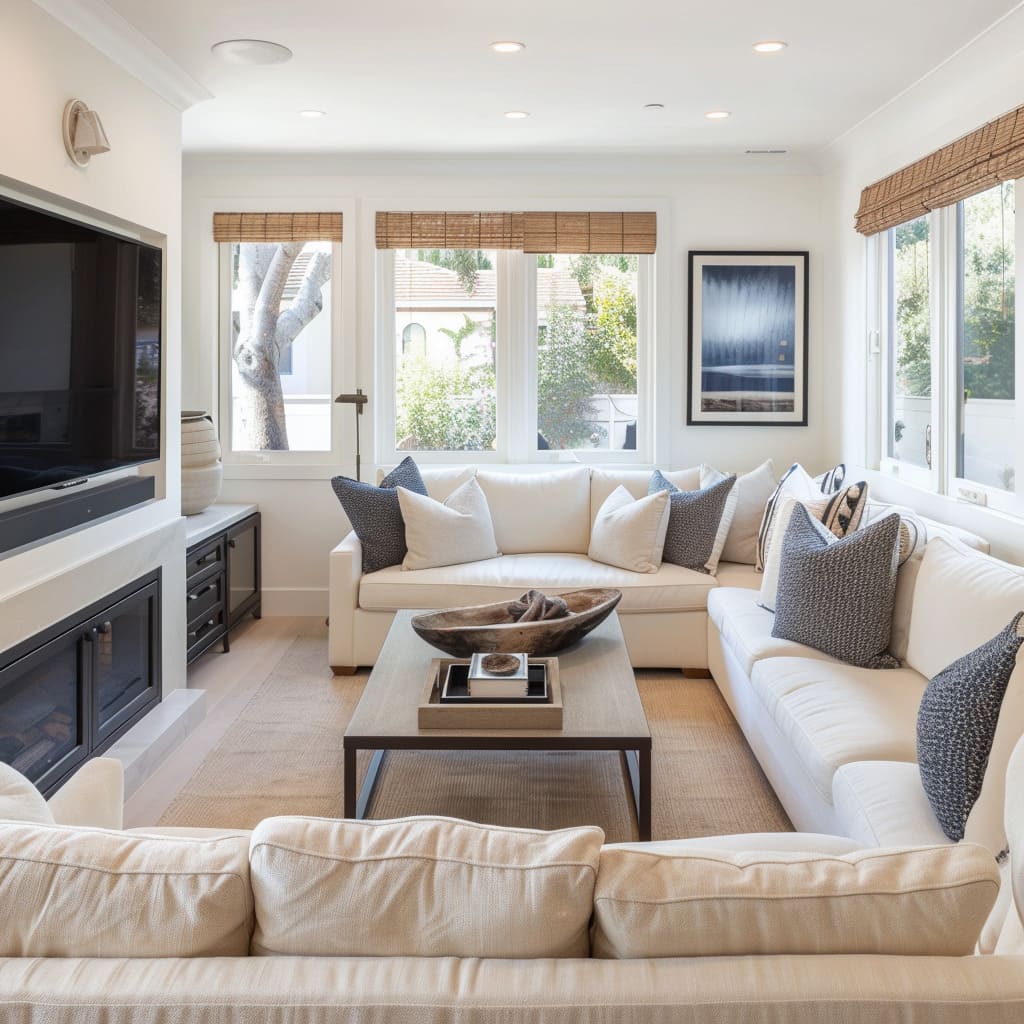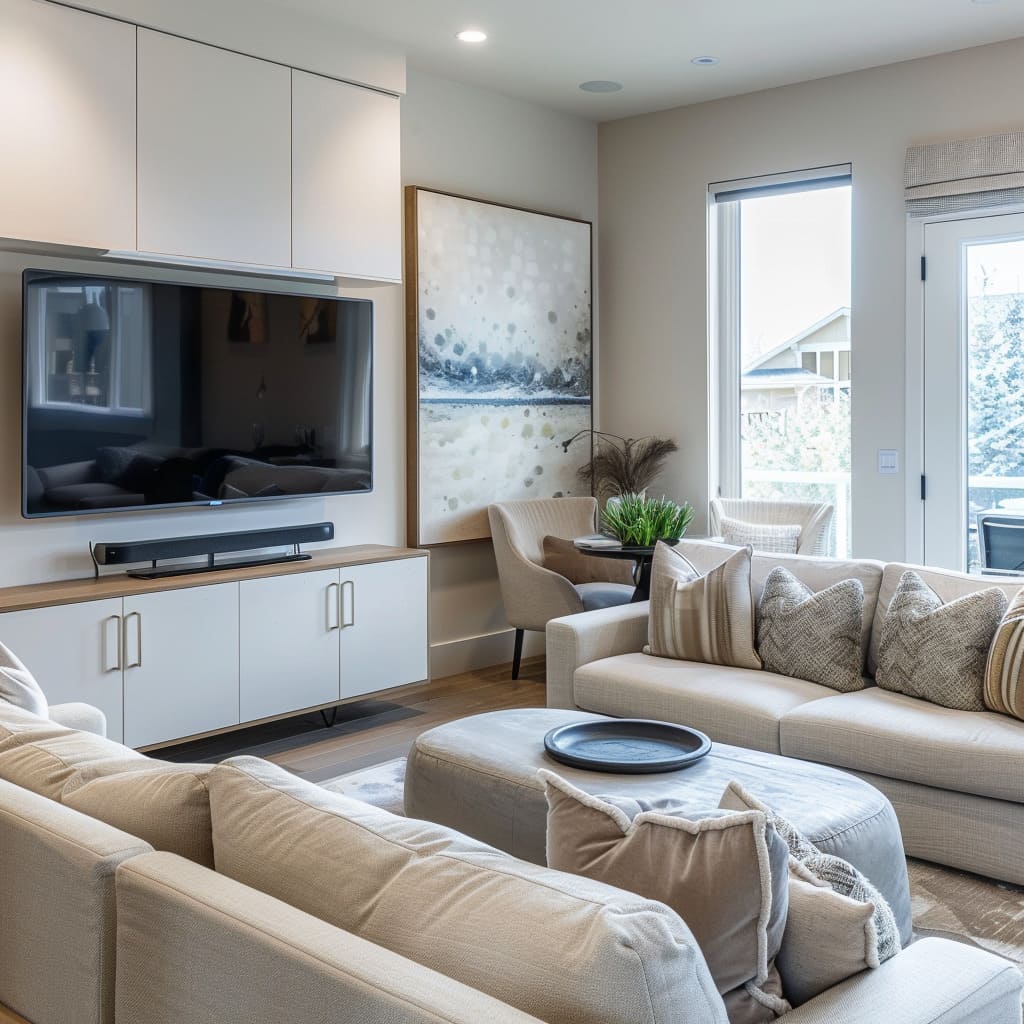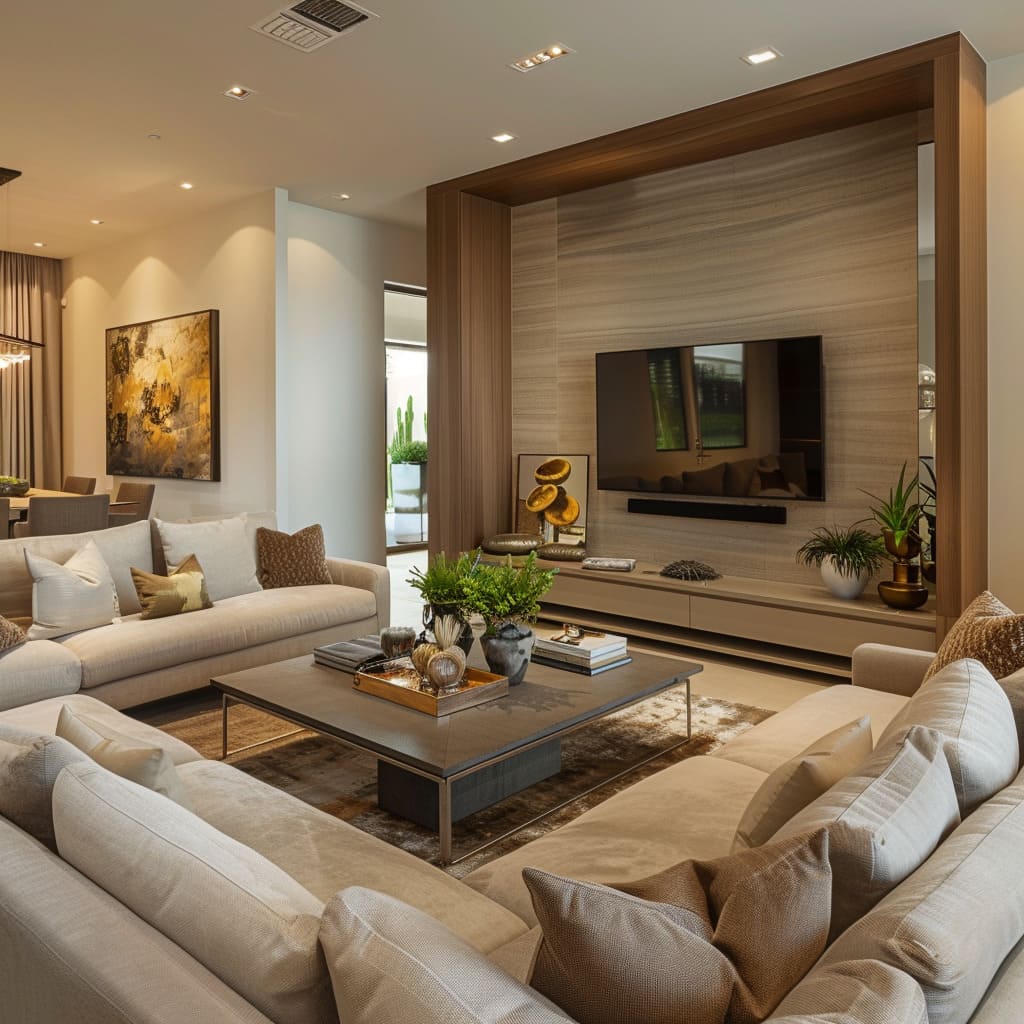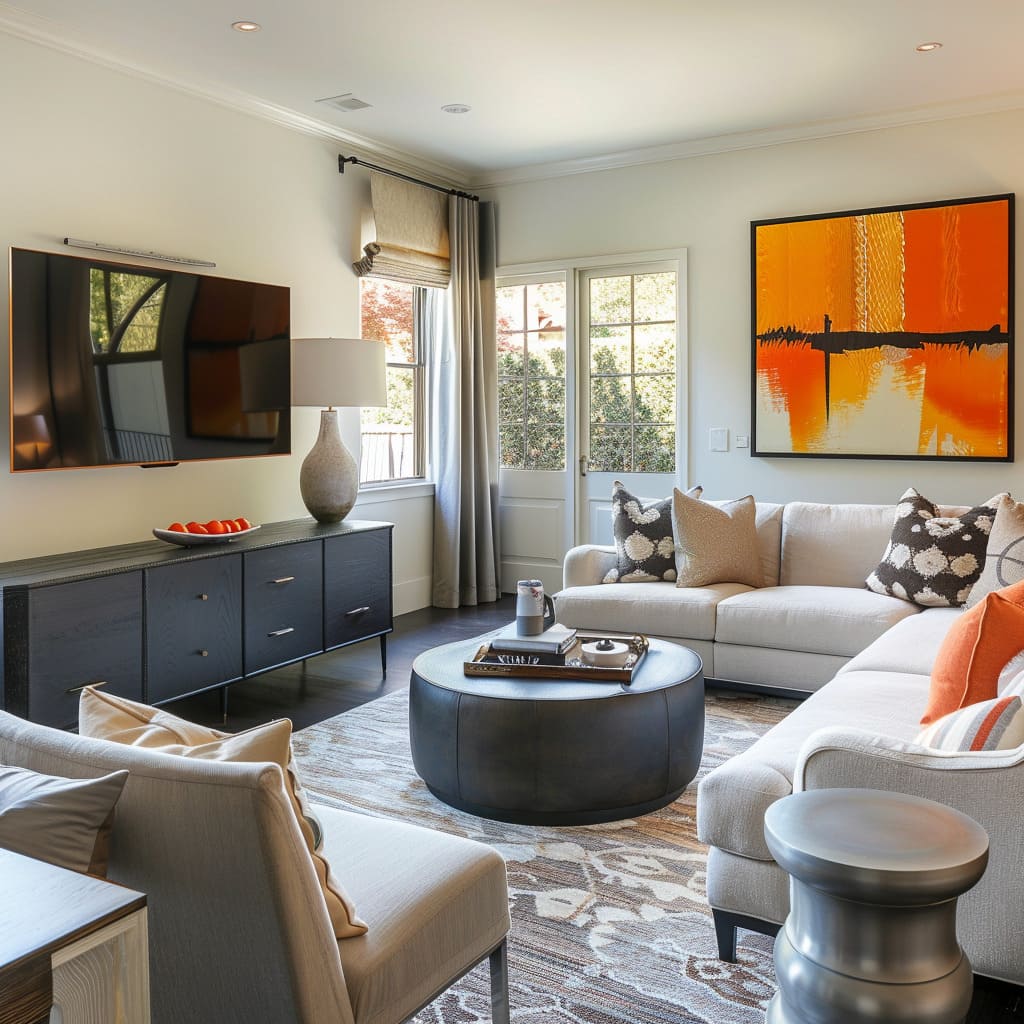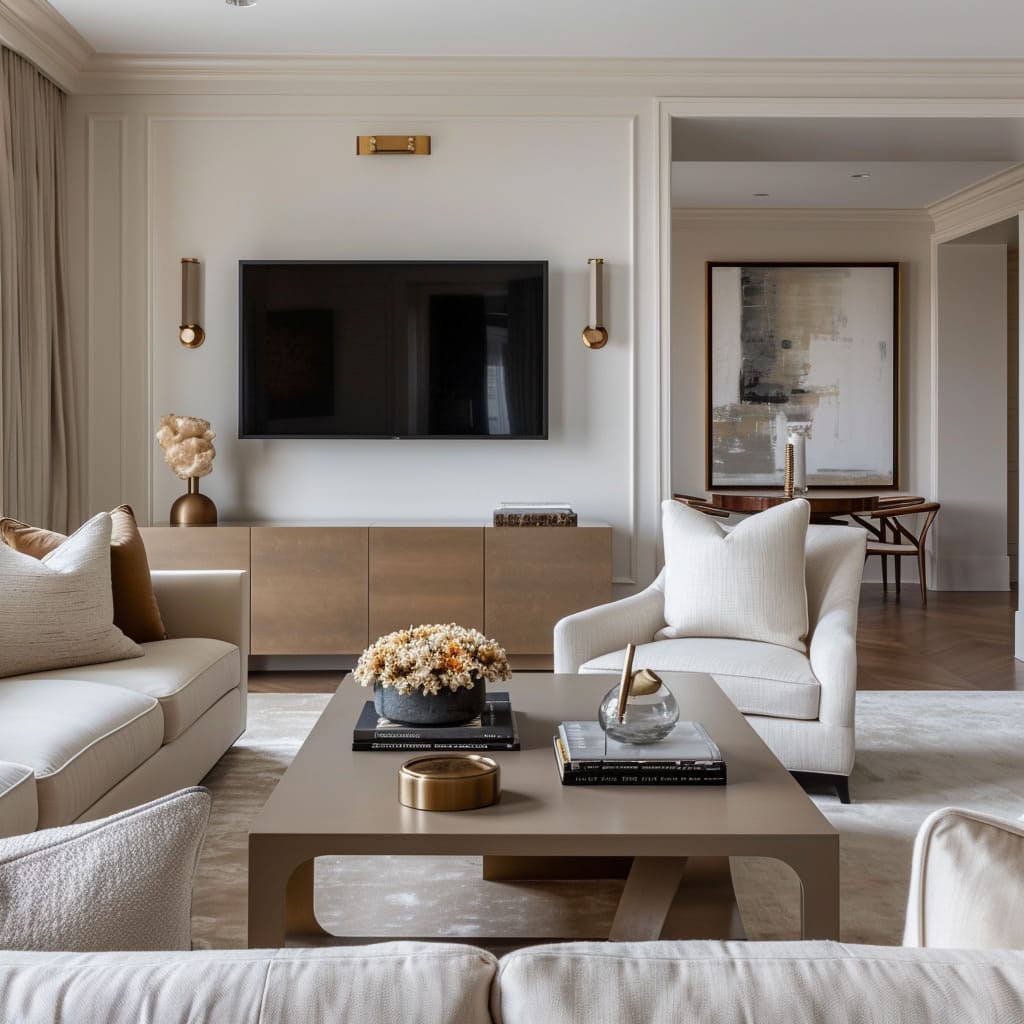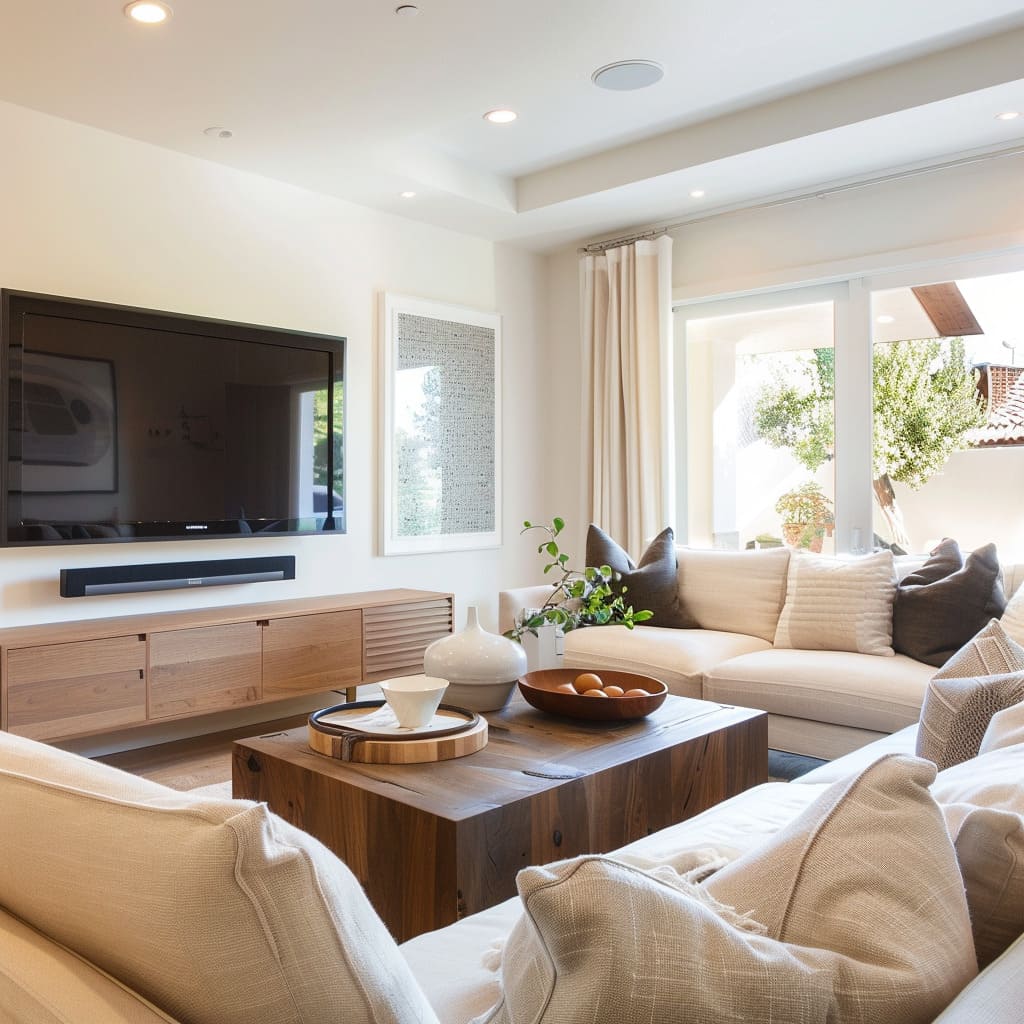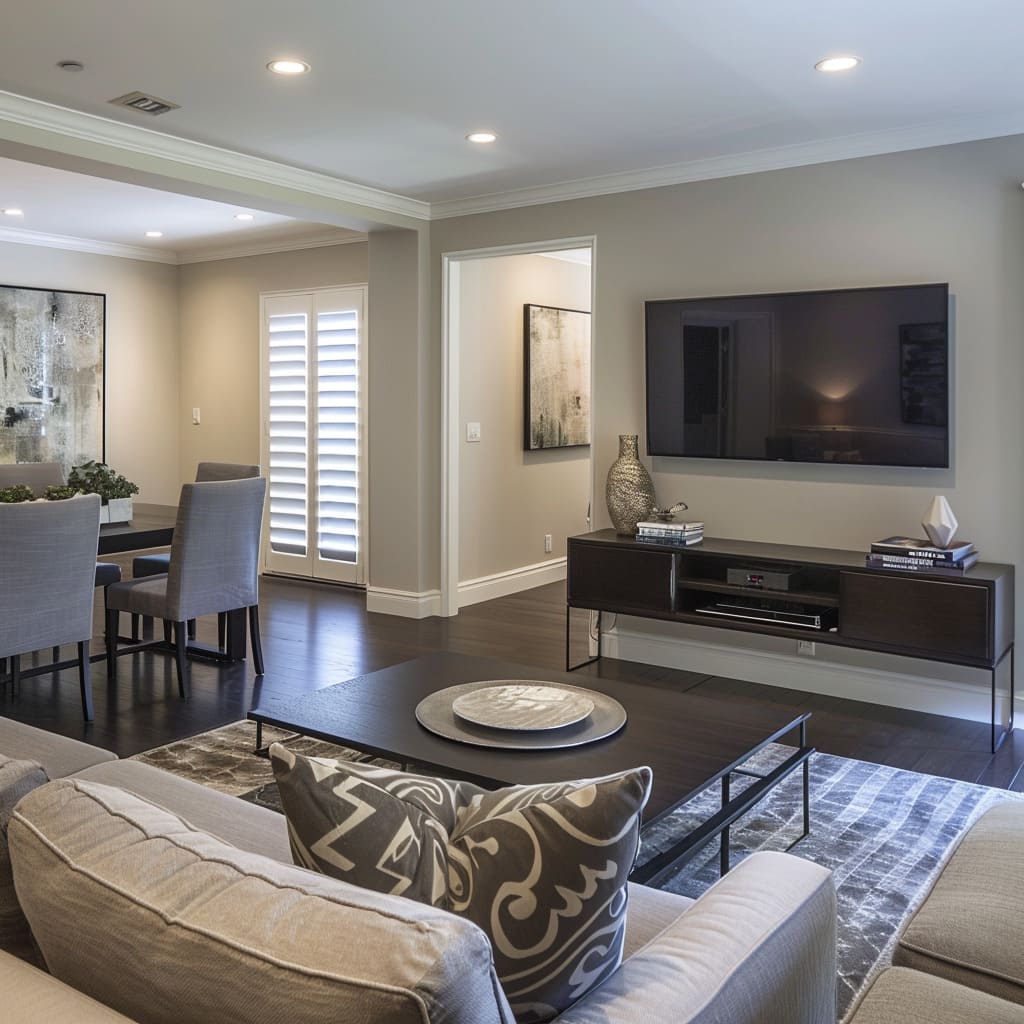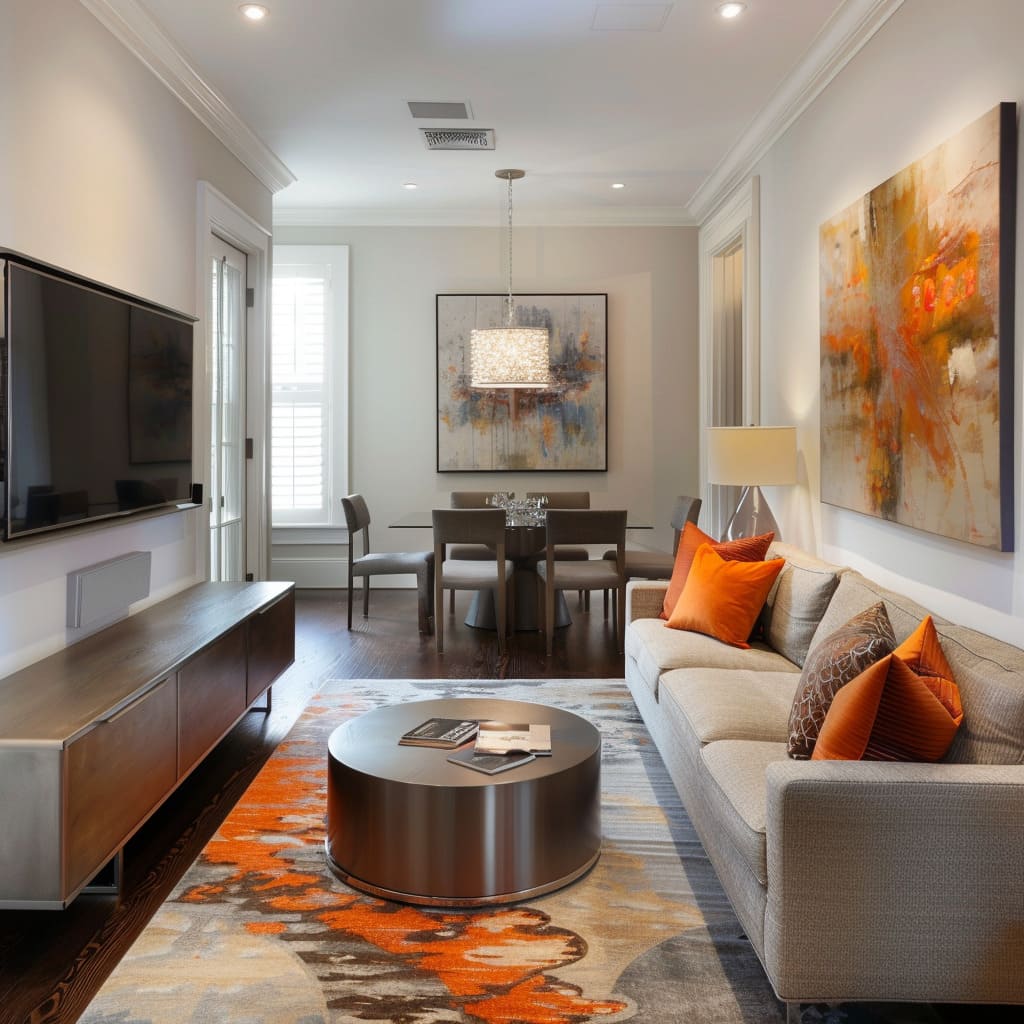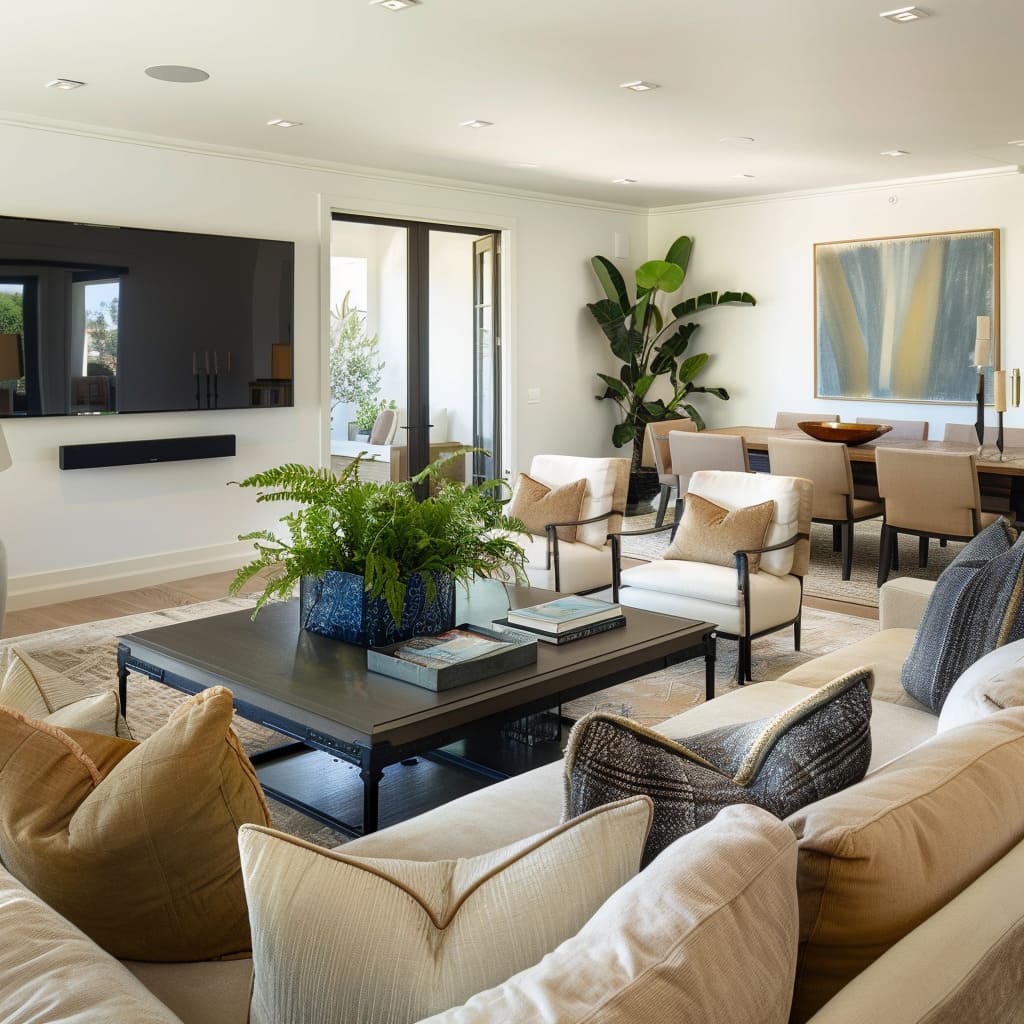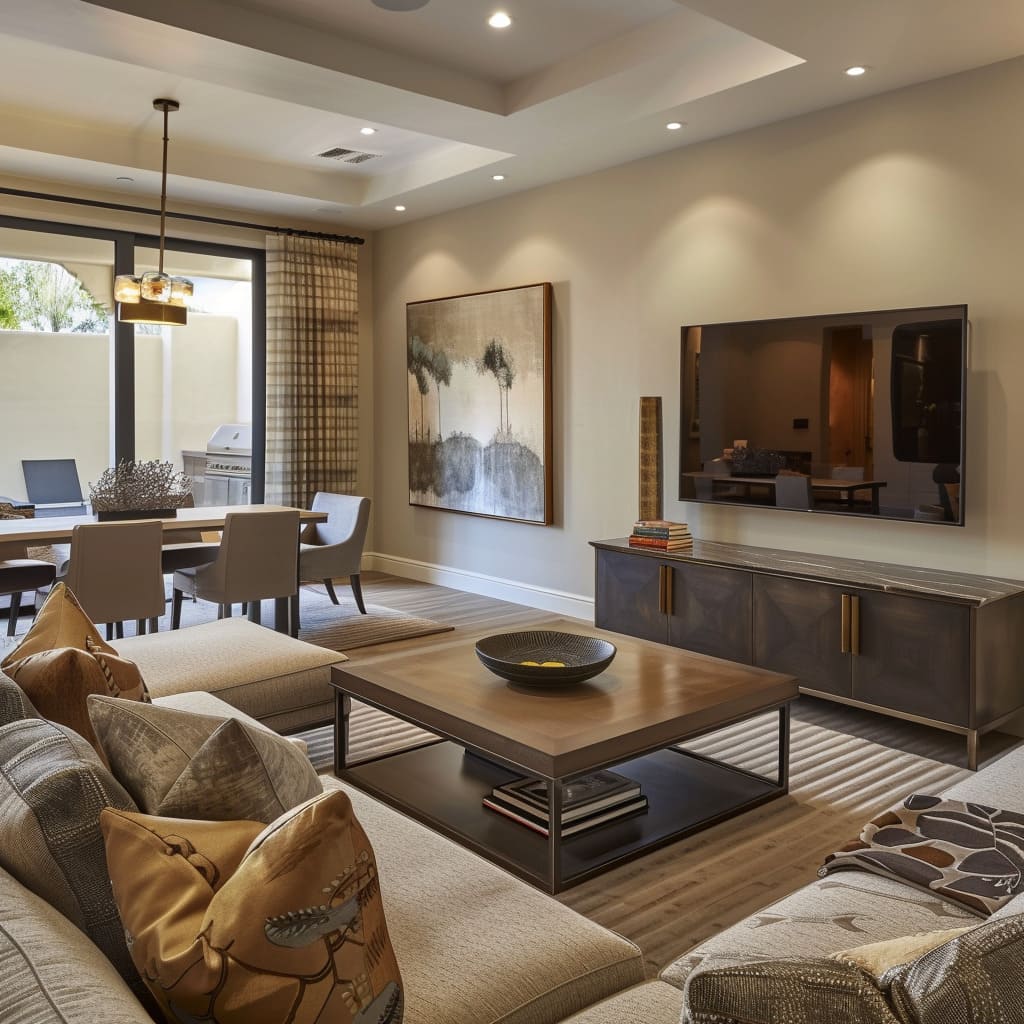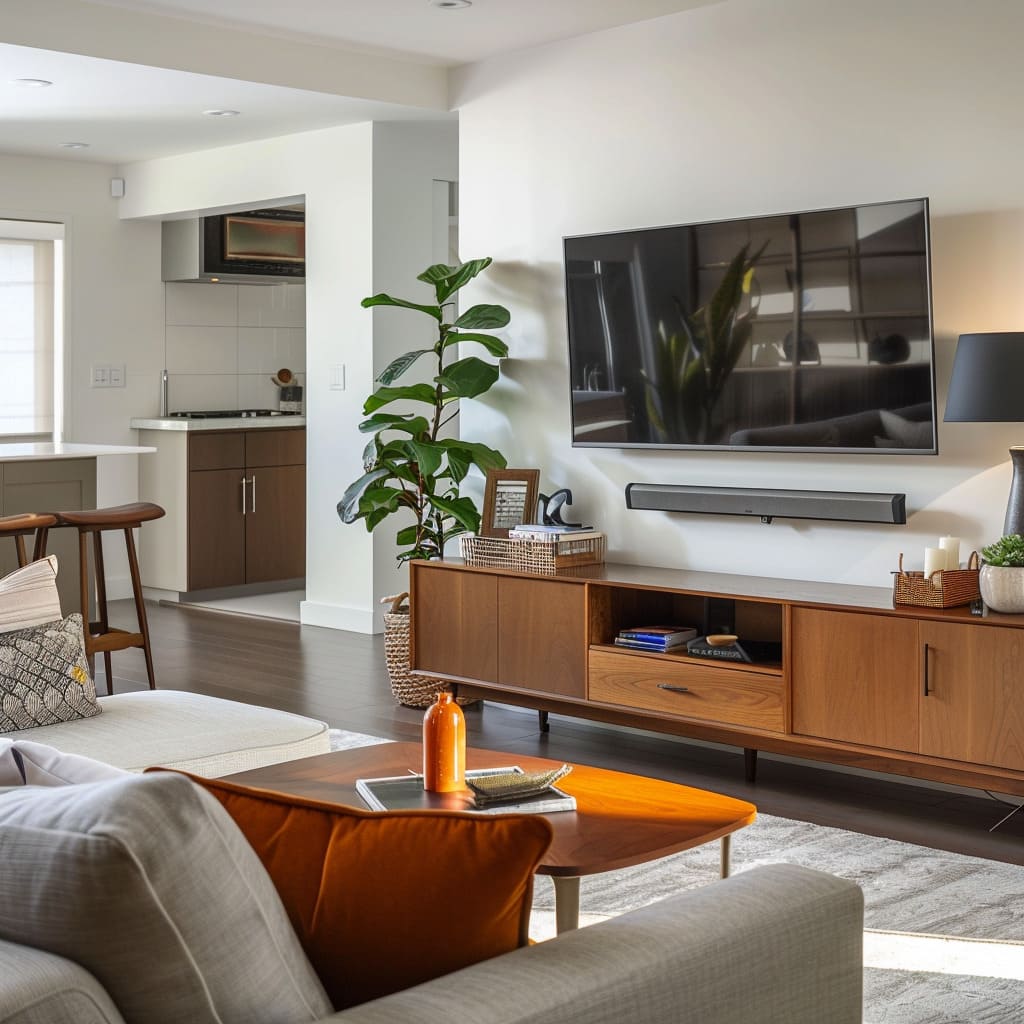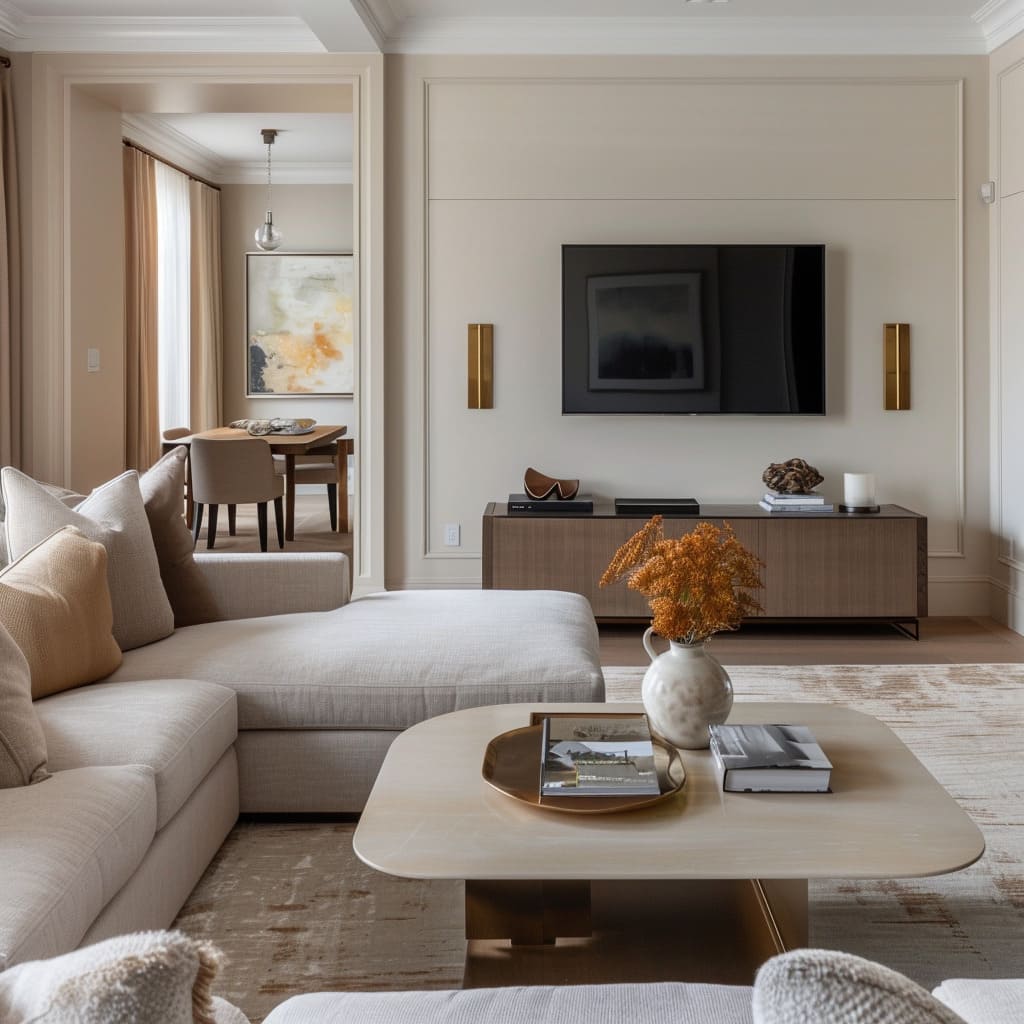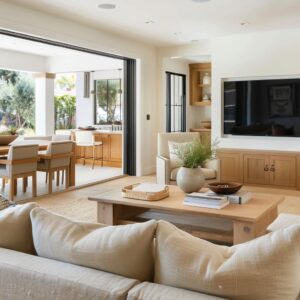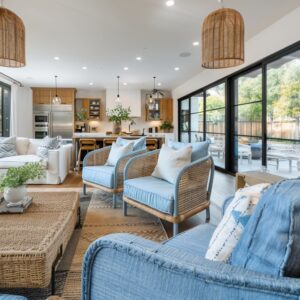Decorating a small living room presents unique challenges but also exciting opportunities. Creating a comfortable and stylish space within limited square footage requires careful planning and creativity.
This guide will provide you with genius decorating hacks to transform your tiny living room into a cozy and chic haven.
Choosing the Right Furniture
Opt for Multi-Functional Pieces
When space is at a premium, every piece of furniture should serve multiple purposes. Sofa beds are perfect for accommodating overnight guests without the need for a separate guest room.
Storage ottomans offer a place to sit or rest your feet while providing hidden storage for blankets, magazines, or toys. Coffee tables with built-in storage are another smart choice, offering both a surface for drinks and a place to stow away items you want to keep out of sight.
Scale Matters
In a small living room, the size of your furniture is crucial. Choosing appropriately sized furniture ensures that the space doesn’t feel overcrowded.
For instance, a small sectional can offer ample seating without overwhelming the room. Slim and compact pieces, like a small accent chair, can provide additional seating without taking up too much floor space.
When selecting a sofa for a small living room, opt for one with a streamlined design and light upholstery to keep the room feeling open and airy.
Upgrading your living room doesn’t have to break the bank. Creating a budget is crucial to ensure you stay on track with your expenses and make the most of your funds.
Start by prioritizing key elements like furniture, lighting, and decor. Consider using multi-functional pieces to save both space and money.
For a rough understanding of potential costs, check out this home renovation cost calculator. This tool can help you plan your budget more effectively, allowing you to create a stylish and comfortable living room without overspending.
Maximizing Vertical Space
Use Tall Shelving Units
Vertical storage solutions can be a game-changer in a small living room. Tall shelving units make use of vertical space, offering plenty of storage without taking up much floor area.
They can be used to display books, decor, and even serve as a room divider in an open-plan space. Decorating with shelves allows you to showcase your personality while keeping the room organized.
Wall-Mounted Furniture
Wall-mounted furniture is another excellent way to save floor space. Floating desks and wall-mounted TV units keep the floor clear, making the room feel more open and less cluttered.
These pieces are especially useful in small living room ideas where every inch counts. By lifting furniture off the ground, you create an illusion of more space and a cleaner look.
Clever Storage Solutions
Hidden Storage
In a small living room, hidden storage is your best friend. Utilizing under-sofa and under-bed storage keeps items out of sight but easily accessible when needed.
Furniture with hidden compartments, such as a couch for small living room spaces that lifts to reveal storage beneath the cushions, is a practical solution for keeping the room tidy.
Creative Use of Nooks and Crannies
Transforming awkward spaces into functional storage areas can maximize your small living space ideas. Baskets, bins, and decorative boxes can be used to store items in unused corners or under furniture.
These solutions keep the room organized without sacrificing style, blending seamlessly with your decor.
By incorporating these small living room decorating ideas, you can create a space that is both functional and stylish, making the most of every square inch. Whether you’re choosing the right small living room furniture or finding clever storage solutions, these hacks will help you transform your tiny living room into a comfortable and inviting retreat.
Playing with Colors and Textures
Light and Neutral Color Palette
Choosing the right color palette can dramatically affect the perception of space in a small living room. Light colors, especially shades of white, beige, and soft pastels, make a room feel larger and more open.
These hues reflect light, enhancing the sense of space and airiness.
When selecting paint colors, consider options like off-white or light grey, which provide a fresh and clean backdrop. For fabrics, opt for light-colored upholstery on your living room furniture for small living rooms, such as sofas and chairs.
This choice not only maintains the open feel but also allows for easy integration of various decor styles.
Adding Pops of Color
While a light and neutral palette forms the foundation, incorporating pops of color can add personality and warmth to your small living room. Bold accents strategically placed around the room can create focal points and draw the eye, making the space feel lively and dynamic.
Throw pillows in vibrant hues, colorful rugs, and eye-catching artwork are excellent ways to introduce color without overwhelming the room. For instance, a few mustard yellow cushions on a beige sofa or a bright piece of abstract art on a neutral wall can instantly enliven the space.
These touches of color add depth and interest, complementing the overall aesthetic without cluttering the room.
Lighting Tricks for Small Spaces
Layered Lighting
Effective lighting is crucial in enhancing the ambiance and functionality of a small living room. Layered lighting involves combining different types of lighting to achieve a balanced and well-lit space.
Ambient lighting provides general illumination, while task lighting focuses on specific areas for activities such as reading or working. Accent lighting highlights architectural features or decor elements, adding depth and dimension.
For a well-rounded approach, consider using a combination of ceiling lights, floor lamps, and table lamps. For example, a sleek floor lamp next to a small accent chair can provide focused light for reading, while recessed ceiling lights offer overall illumination.
This layered approach ensures that every corner of the room is well-lit and inviting.
Mirrors and Reflective Surfaces
Mirrors are a powerful tool in creating the illusion of more space in a small living room. Strategically placing mirrors on walls can reflect light and open up the room, making it feel larger and more expansive.
A large mirror above a sofa or a console table can double the perception of space, while smaller mirrors can be used decoratively to achieve the same effect. Additionally, incorporating reflective materials in your decor, such as glass or metallic finishes, can enhance this effect.
For example, a coffee table with a glass top or metallic accents on picture frames and lamps can add a touch of elegance and make the room feel more open.
By thoughtfully selecting colors, textures, and lighting, you can transform a small living room into a stylish and comfortable space. These living room decorating ideas not only maximize the available space but also create a welcoming environment that feels larger than it is.
Whether you’re exploring furniture ideas for small living rooms or considering the best small living room furniture layout, these tips will help you achieve a balanced and beautiful design. Incorporating small living room ideas with a TV and other essential elements ensures that your space is both functional and aesthetically pleasing, making it a perfect spot for relaxation and entertainment.
Smart Layout and Arrangement
Open Floor Plan Concepts
Creating a flow in a small living room is essential to making the space feel larger and more inviting. One effective approach is to embrace open floor plan concepts.
This involves minimizing the barriers between different functional areas, allowing for a seamless transition between the living room, dining area, and kitchen. Arranging furniture in a way that promotes openness and fluid movement is key.
For instance, placing a small sectional sofa to define the living area while leaving ample space around it can create a natural pathway and ensure the room feels spacious. Floating furniture away from walls and using rugs to delineate different zones can also contribute to a more open and airy atmosphere.
Traffic Flow Considerations
When arranging furniture in a small living room, it’s crucial to consider traffic flow. Ensuring easy movement within the room prevents it from feeling cramped and cluttered.
Positioning furniture to allow clear pathways between entry points and functional areas is essential.
For example, placing a coffee table at an appropriate distance from the sofa provides enough room to walk around comfortably. Avoiding large, bulky pieces and opting for slim, streamlined designs can help maintain an unobstructed flow.
Additionally, thoughtful placement of small living area ideas, such as using a compact side table instead of a large console, can enhance mobility and prevent the space from feeling congested.
Personal Touches and Decor
Incorporating Personal Style
Adding unique decor elements that reflect your personality can transform a small living room into a cozy and inviting space. Personal touches, such as family photos, travel souvenirs, and cherished artwork, make the room feel like home.
Balancing style with functionality is important to ensure that decor does not overwhelm the space. For instance, selecting a few statement pieces, like a striking piece of wall art or a distinctive vase, can add character without causing visual clutter.
Mixing textures and materials, such as combining a wooden coffee table with a metallic lamp, can create a dynamic and personalized look.
Minimalist Approach
Adopting a minimalist approach can greatly benefit the overall feel of a small living room. The less-is-more mentality emphasizes simplicity and functionality, which are crucial for maintaining a clean and uncluttered look.
To achieve this, focus on selecting essential pieces that serve multiple purposes.
For example, a small sitting room decor idea could involve using a sleek, multifunctional coffee table that offers storage and display space. Keeping surfaces clear of unnecessary items and choosing decor that complements the room’s color palette can enhance the minimalist aesthetic.
Additionally, opting for furniture with clean lines and neutral tones can create a sense of calm and order.
Conclusion
In summary, decorating a small living room involves strategic planning and creativity. By adopting open floor plan concepts, ensuring good traffic flow, incorporating personal touches, and embracing a minimalist approach, you can create a stylish and comfortable space.
The key points discussed include selecting the right furniture, maximizing vertical space, using clever storage solutions, playing with colors and textures, and implementing smart layout and arrangement strategies. Experimenting with these small sitting room decor ideas can help you achieve a living room that is both functional and visually appealing.
Whether you’re looking for living room small space design ideas or sitting room decorating ideas, these tips will guide you in making the most of your small living space.

